Joe on the Go – HuNu Collapsible Mugs
Environmentally friendly, compact, and practical!
These collapsible silicone travel mugs are handy for travel and also can be easily stowed on board without much space, when extra mugs are needed!
Environmentally friendly, compact, and practical!
These collapsible silicone travel mugs are handy for travel and also can be easily stowed on board without much space, when extra mugs are needed!
Beautiful La Manzanilla de la Mar, a spectacular beach and quaint little town in Mexico. Just right for a few weeks or a few months to enjoy the warmth, the water, the lovely people, and so much more!
As most seasoned liveaboard cruisers will tell you, the cruising life is often described as “fixing your boat in beautiful remote places”. That also applies to preparations for setting off and readying for a circumnavigation. With covid, lots of things went sideways and delayed, so now there are projects to catch up on as well as those to prepare for upcoming offshore passages.
Aramis had been at the dock in a marina south of Vancouver for longer than she’d like to admit and she was ready to get going when Savvy Sailing Girl rejoined her and her captain Paul, aboard. The plan was to haul out in April, but things don’t always go as planned and the haul out was delayed and relocated. It isn’t a bad thing that the haul out was rescheduled for a few months later as the weather was cold and wet all the way through June.

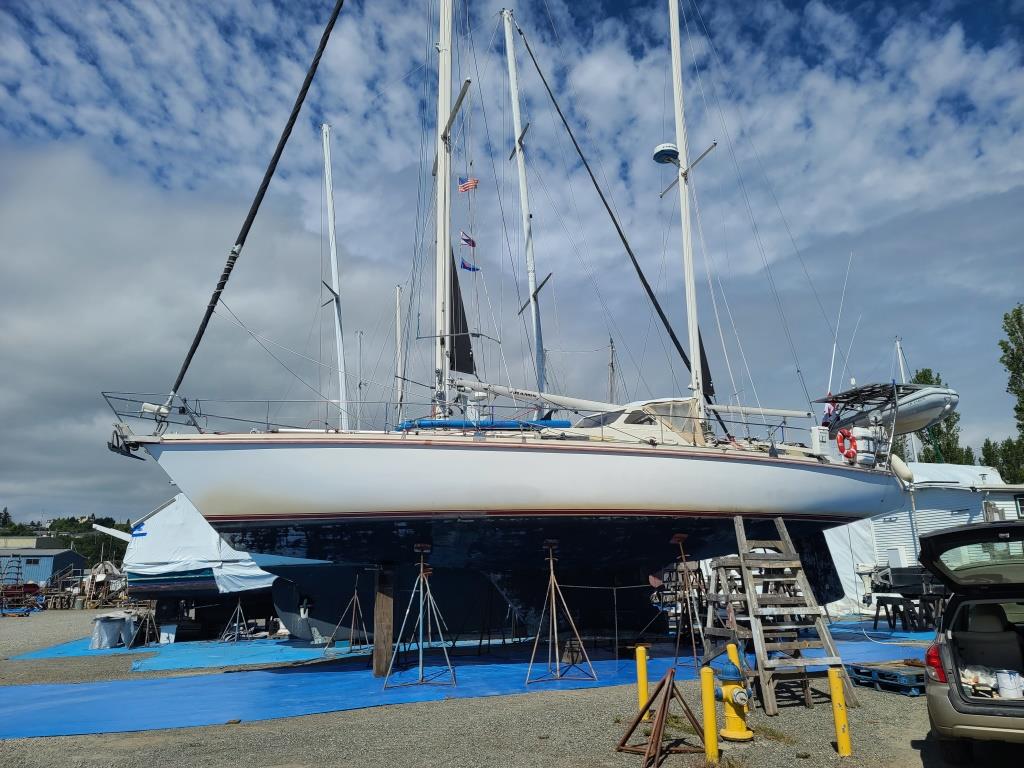
It was mid-July and time for Aramis to be lifted out of the water and propped up in the boatyard (aka haulout) for some much-needed TLC. What we anticipated being a short time in the yard (estimate was about 3 weeks) turned out to be more like 3 months! Projects were more involved and took longer than we thought and stretched out to weeks not days, and unplanned projects had to be researched and planned as well.
The upside to this is that Savvy Sailing Girl got to spend some additional time in the lovely town of Port Townsend, Washington. A quaint little place with an interesting maritime history, Port Townsend has some wonderful attributes to keep the crew happy during off-work hours. Savvy Sailing Girl isn’t much of a history buff, so she’s focusing on other touristy and fun activities, but to be sure, there are plenty of museums and historic sights to be enjoyed as well.
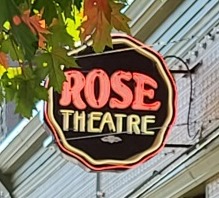
The top of the list, for those who love movies, is the Rose Theatre. It’s a local art film venue with amazing freshly-made popcorn prepared with real butter. There are two theaters downstairs and then there is the Starlight Room upstairs next door. The Starlight has chandeliers, quirky antique sofas, chairs, and tables. Popcorn is served in proper bowls and beer and wine are also available. It’s a great place to go and the movies happily aren’t your standard Hollywood showings.
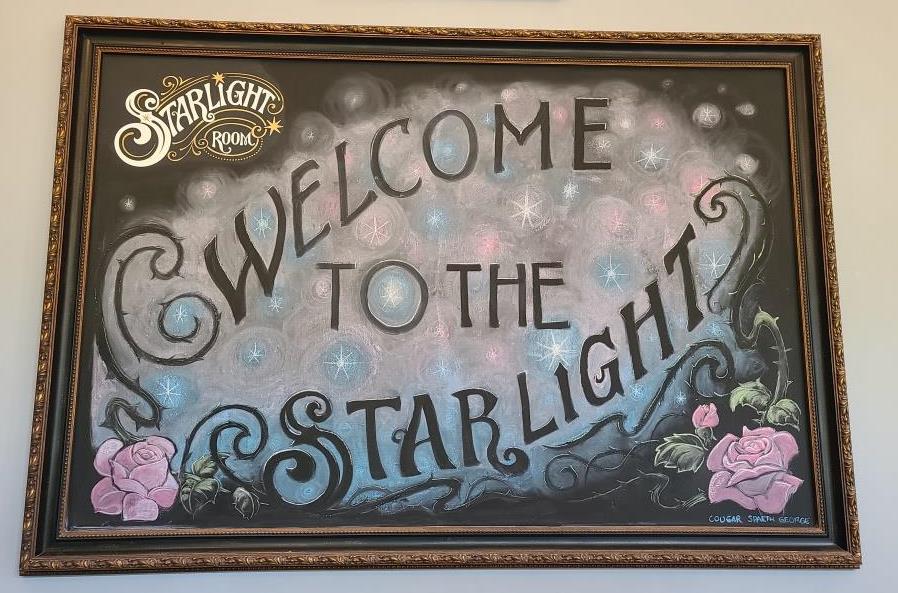


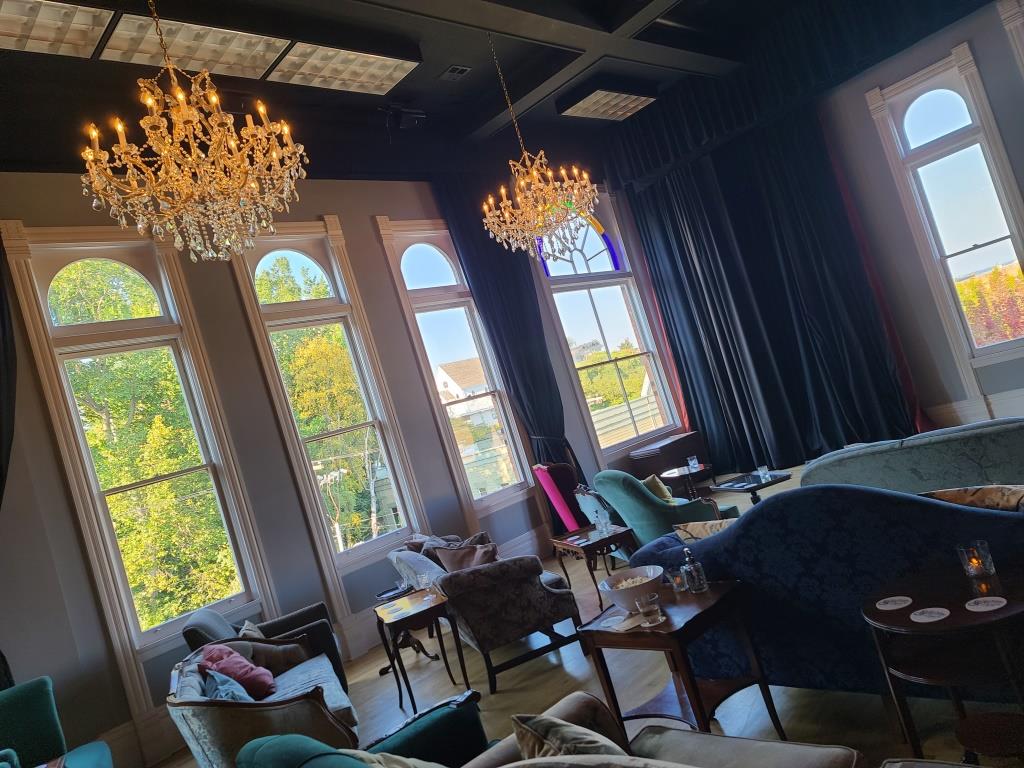
Restaurants are plentiful and offer a wide variety of food as well as lovely ambiance. Siren’s, a second-floor pub in a historic waterfront building, has a great deck out back where you can gaze lovingly at your yacht if anchored there. If you aren’t lucky enough to have your own boat, you can watch the ferry coming and going. The Waterfront has great take-out/delivery pizza and then there’s Elevated Ice Cream for a taste of the really good homemade stuff. There is also a myriad of little shops, with artistic, quirky, and specialty items. The Wine Seller is a terrific little shop with all sorts of offerings you wouldn’t necessarily find in your normal bottle shop. I even found a favorite Sherry I had discovered in Europe last year and didn’t think I’d see again outside that region of Spain.

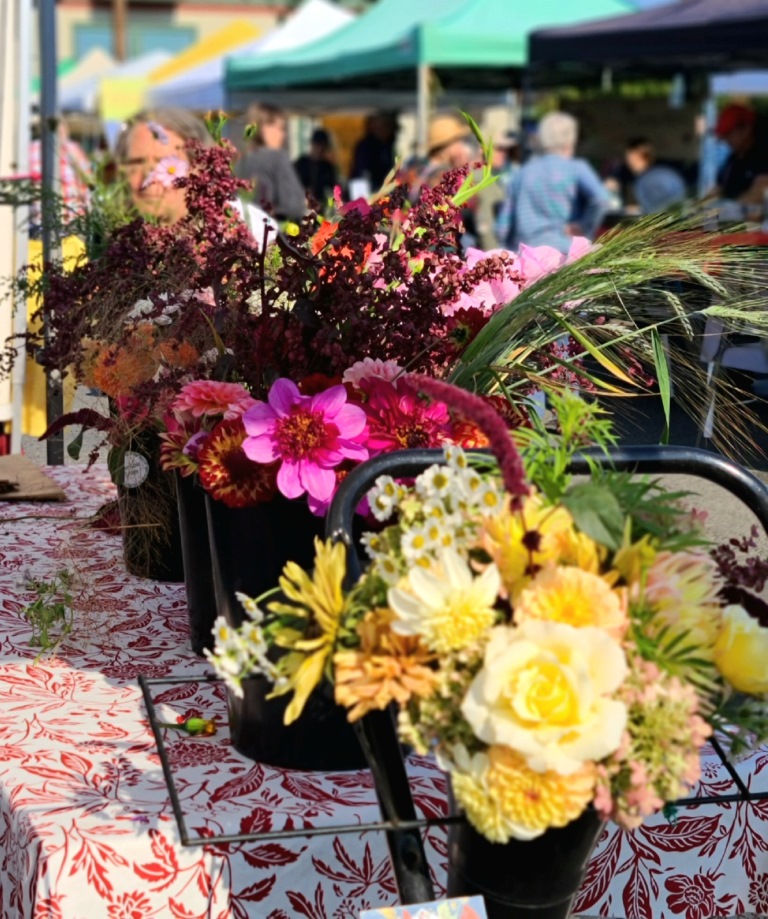
The town is divided into “Uptown” and “Downtown”, with the up and down pretty much a literal height distinction. Uptown has a small and fun weekly outdoor market, with as many yummy bakery stalls as it has for fresh produce. And speaking of bakeries… Pane d’ Amore is a favorite. There is a shop Uptown and the main bakery is right by the boatyard (about ½ mile outside of town). This has proven to be both wonderful and challenging, as it’s hard not to indulge regularly when you are so close and need some comfort food to get you through the long haulout.
Downtown has some beautiful buildings, statues, and lovely places along the waterfront to sit.

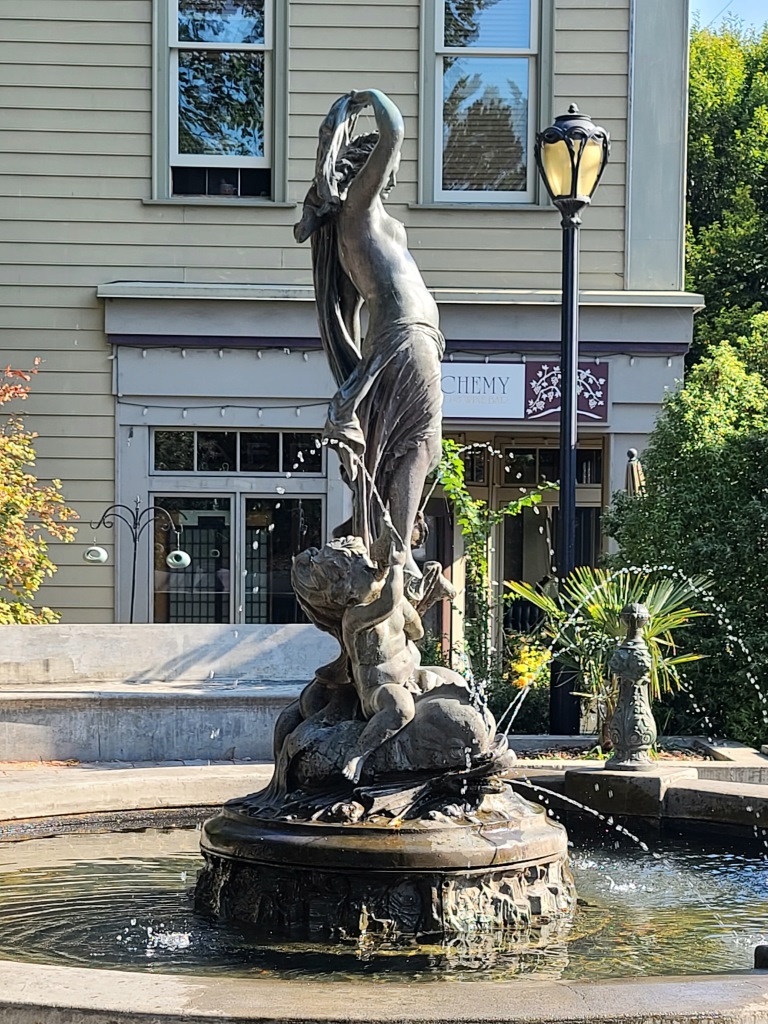
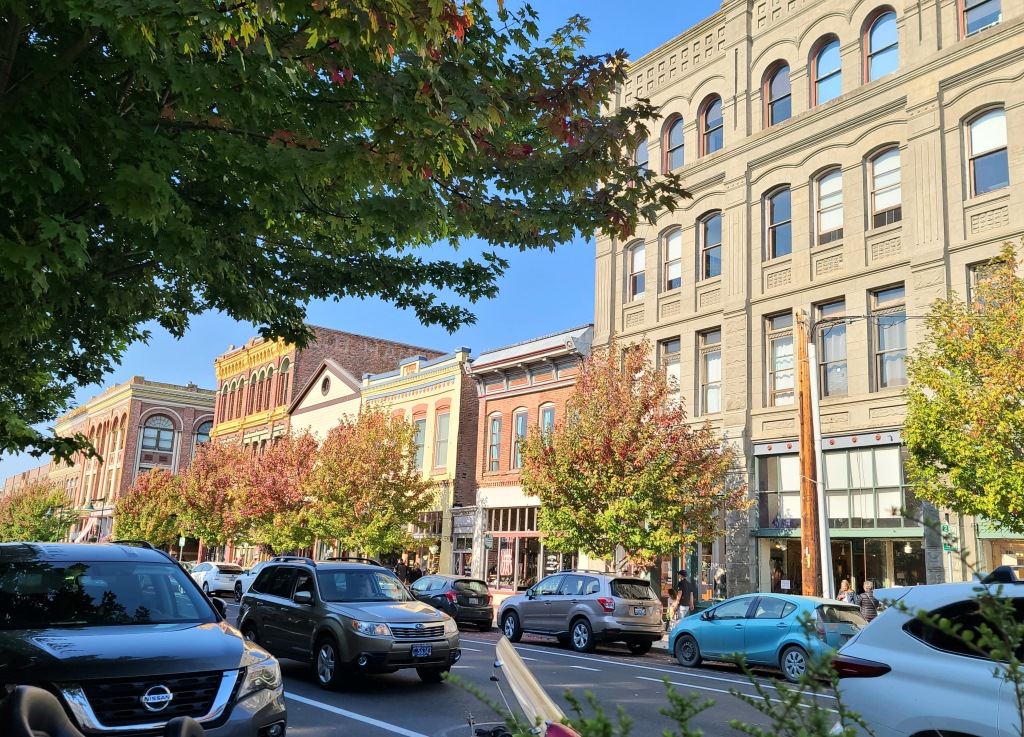
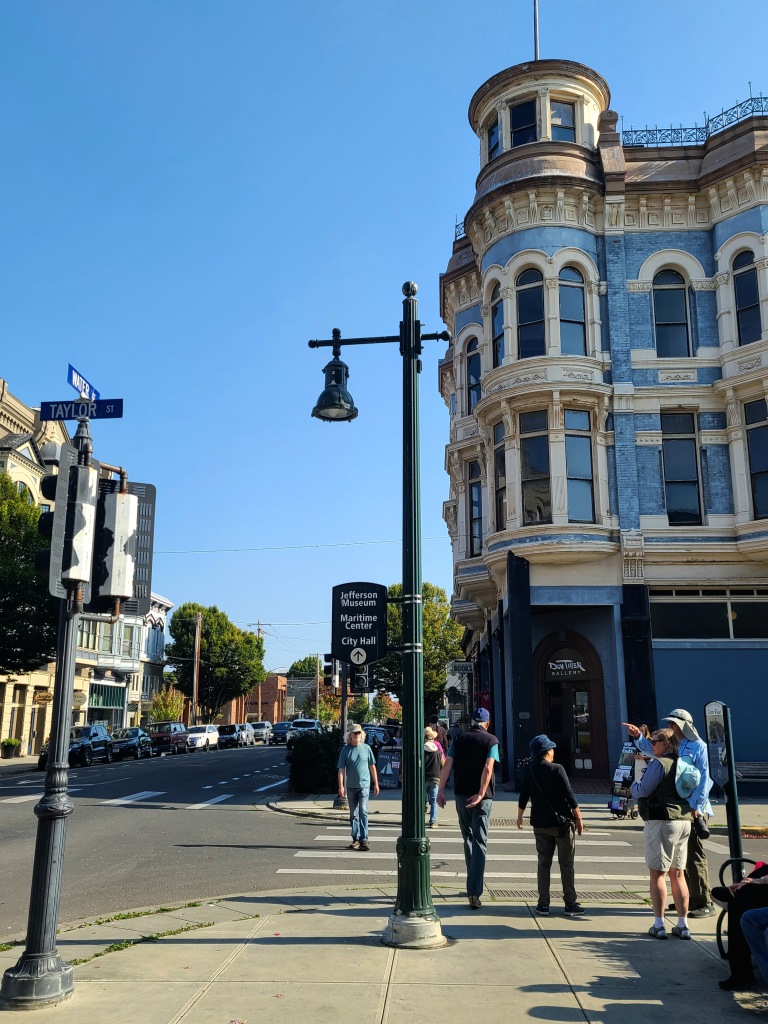
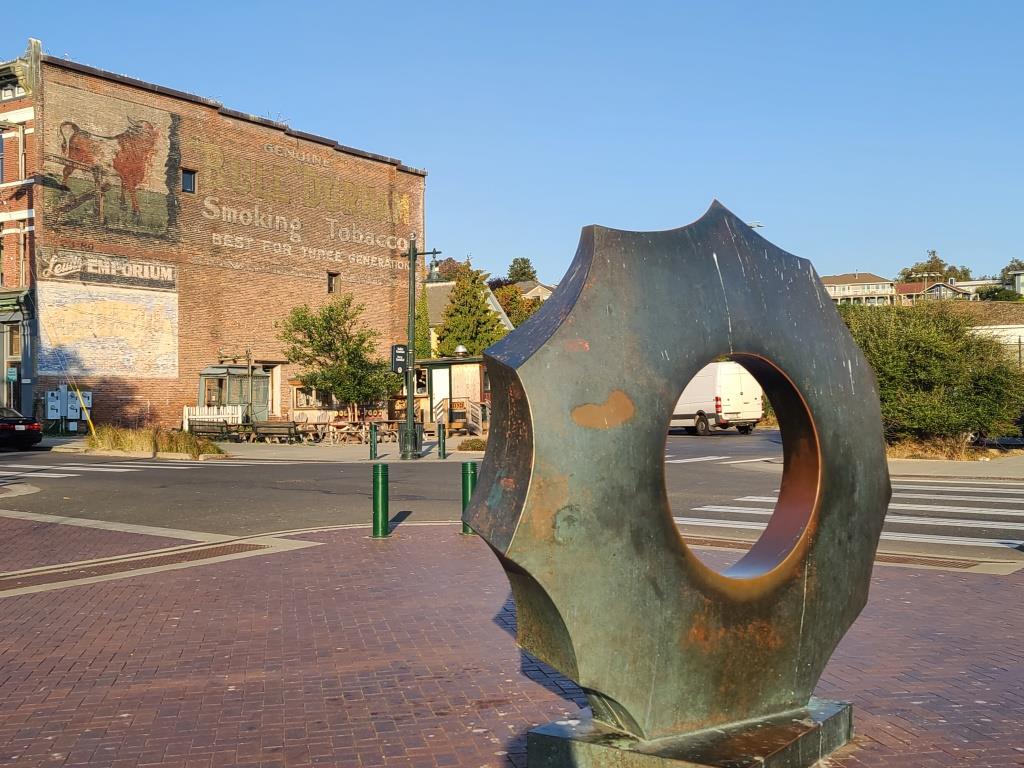

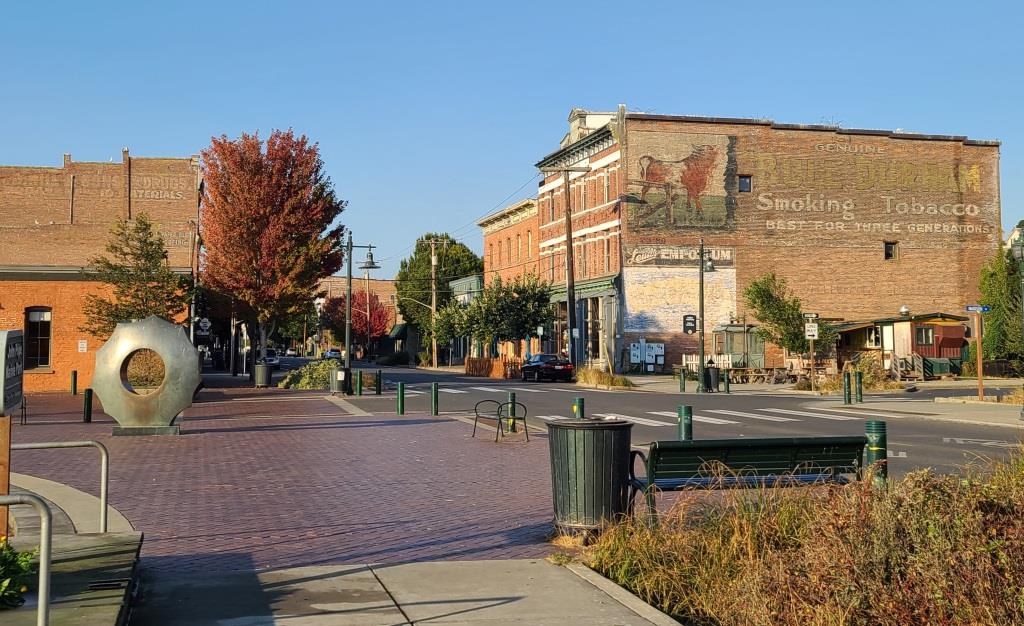
Port Townsend almost became the capitol of Washington in the late 1800’s when the railroad was planned to be built there to carry goods shipped in to the thriving port. However, when the depression hit and the railroad couldn’t finance the project all the way to Port Townsend, the town was all but abandoned. Almost overnight, the town rolled up the sidewalks, ceased building and most workers moved out. There are still some remnants of this radical change of course to be seen. There is a definitive before and after look about the place. That said, Port Townsend has a long and rich history in the maritime industry, most notably for its wooden boat business. There are still many talented tradespeople here to support the boating industry. There’s a Wooden Boat Foundation and an annual Wooden Boat Festival where people show the results of their stunning work.
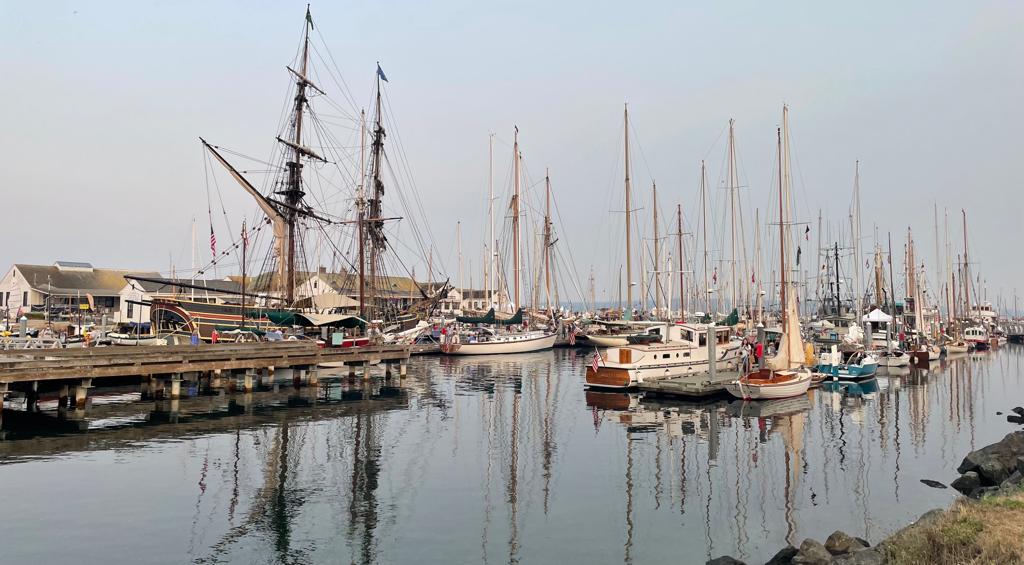
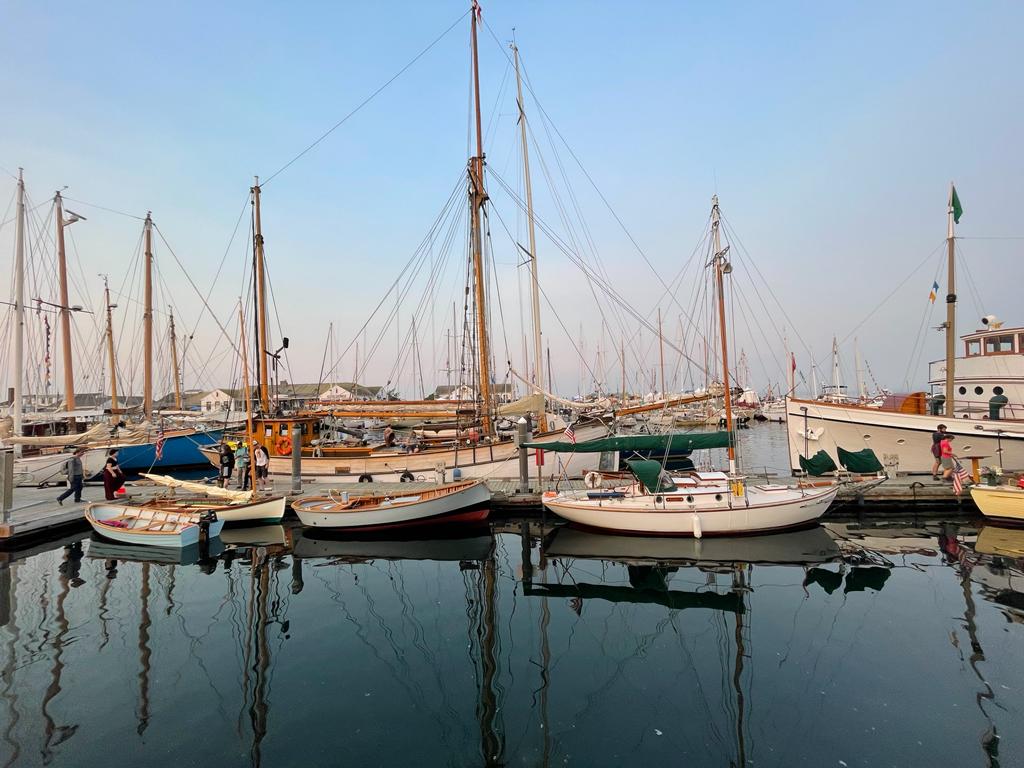
One of Savvy Sailing Girl’s Favorite things to do, which also helps counteract the bakery forays, is taking local Zumba dance fitness exercise classes. If you happen to be visiting Port Townsend, try and take a class with Bailey, a wonderful and inspiring instructor (thanks Bailey!) But despite the many things this town has to offer visitors, most of our time in Port Townsend has looked more like this…
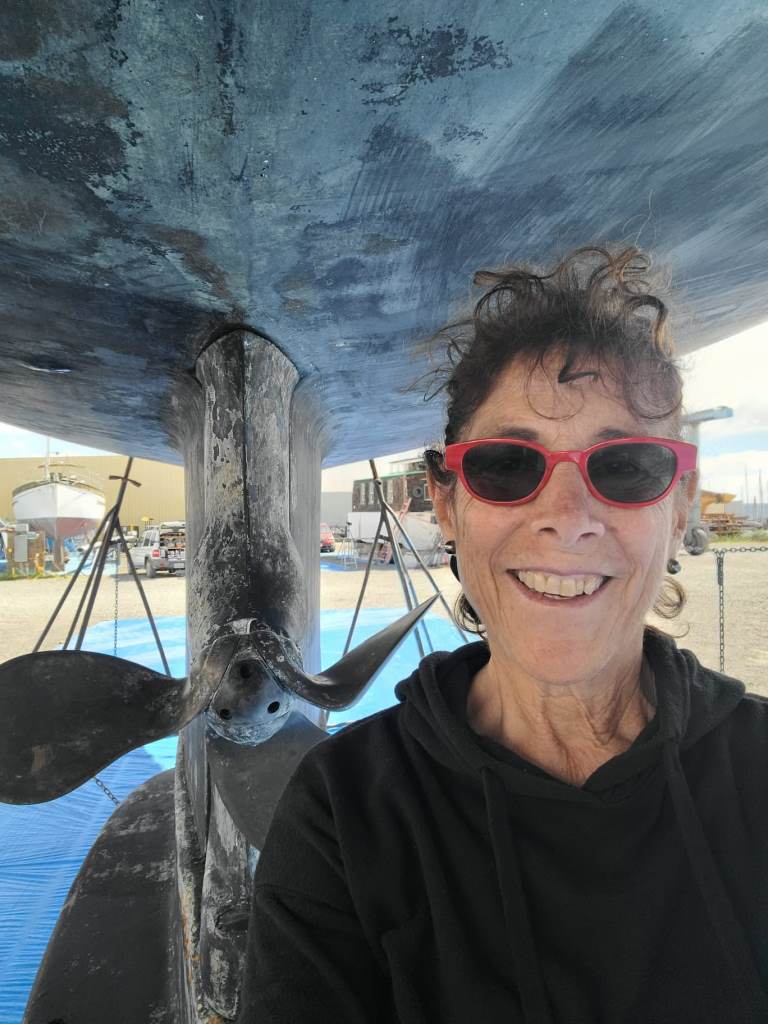
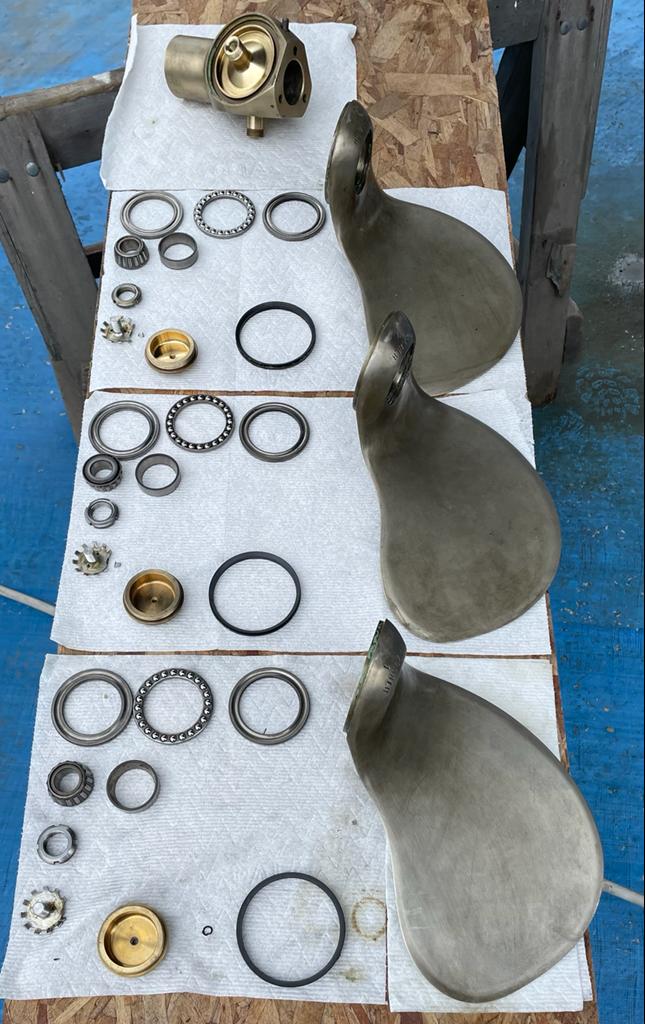
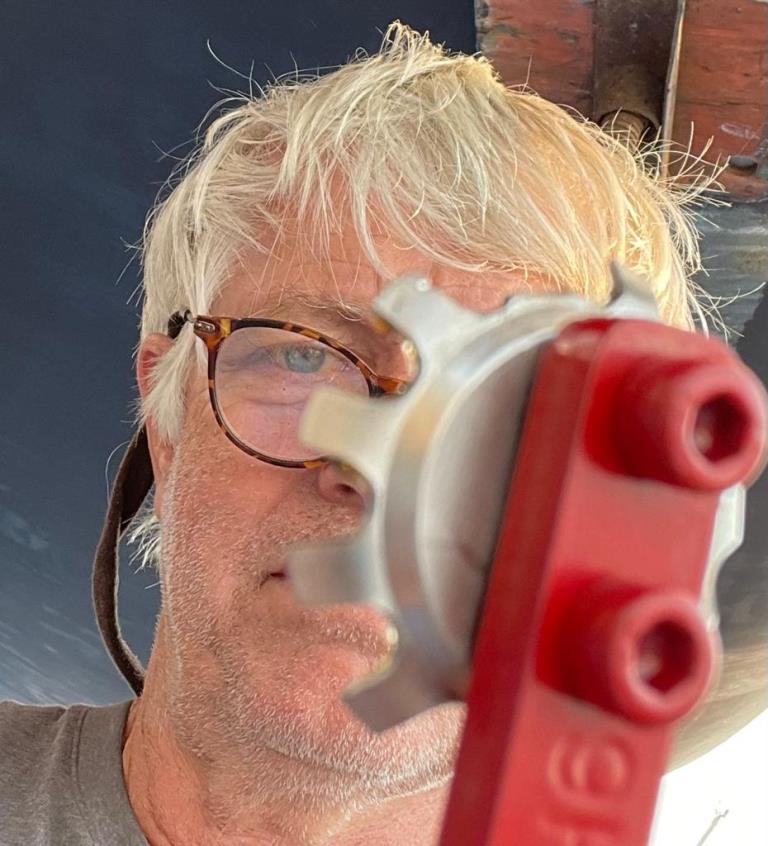



As we near the end of our stay, Savvy Sailing Girl notices that the trees are starting to turn, the apples are ripening, the geese have flown off, and fall is here. Winter is coming and we need to follow the Canadian geese we have enjoyed watching and hearing, and head south.

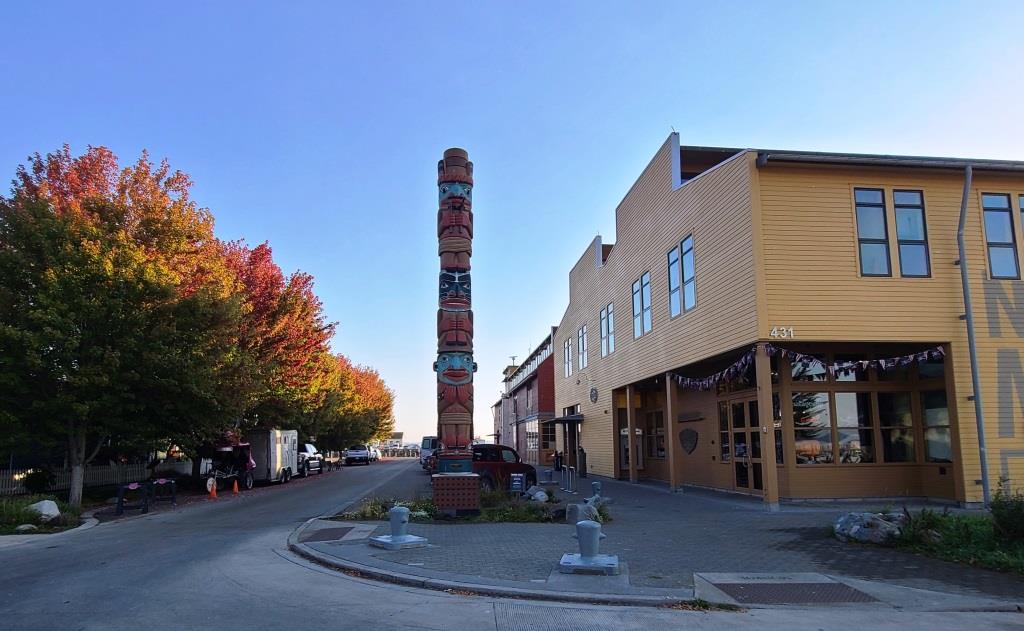


Madeira, although part of Portugal, is located well offshore off the coast of Africa. Known for its fortified wines, Madeira is lovely with a distinctive mountainous terrain.
Madeira, ma dear!
Madeira is comprised of the islands of Madeira Grande and Porto Santo, plus a few uninhabited islands. Although belonging to Portugal, it lies remotely in the Atlantic. Come have a tour and a taste of this lovely region!
The storks of Faro, Olhão and Portimão were an unexpected delight. This area of southern Portugal is lovely and people flock here for the beauty, the wonderful climate, and well… for some of us, the storks!

We were headed for Faro, where our two new crew members would be joining. I was going to be taking a bus to Porto and meeting Kimberly, another crew mate rejoining the boat for the passage to Madeira and on to the Canaries. It was mostly a motorboat trip, but lovely weather and a good passage. We anchored by the island of Culatra, near Olhão. The entire area and up to Faro is an estuary. Culatra is a little fishing village on an island. There’s a ferry up to Olhão, which we took. There are storks in Olhão, in Faro, and in Portimão. The nests are huge and very impressive, perched on the church tops and other tall structures. After two days, we pulled up the anchor and headed up the estuary close to the town of Faro. It’s actually a much larger town than I had expected with a historic center surrounded by large modern neighborhoods. We found a lovely local fish restaurant where we enjoyed grilled sardines, a Portuguese specialty.
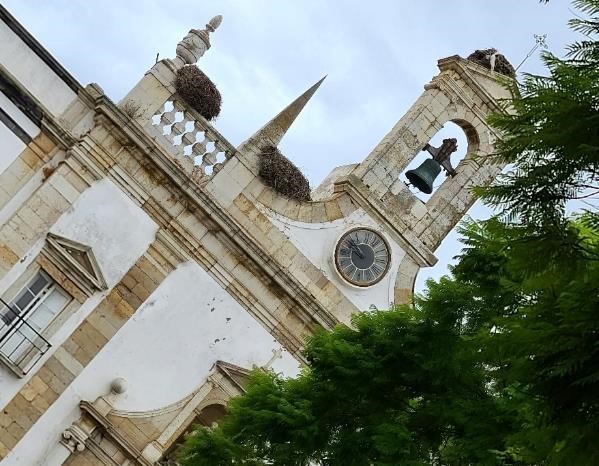
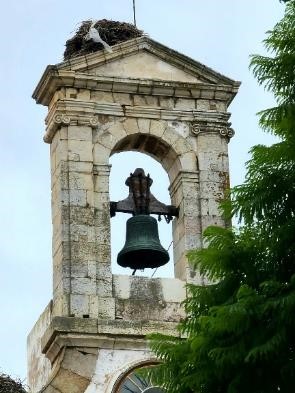
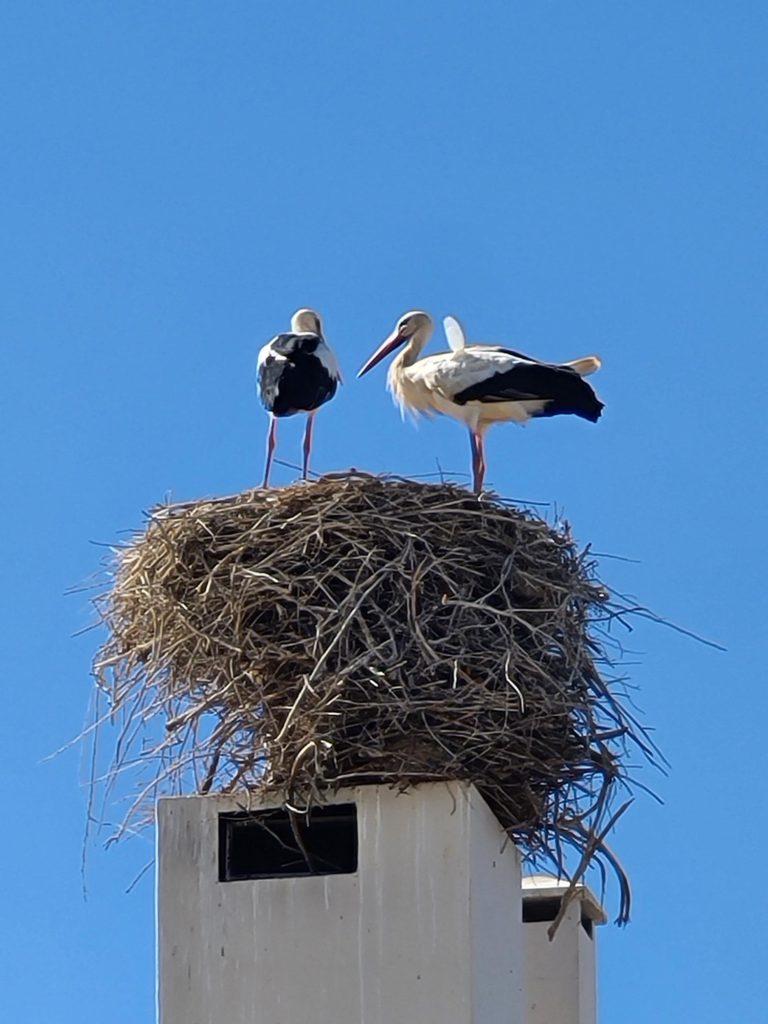

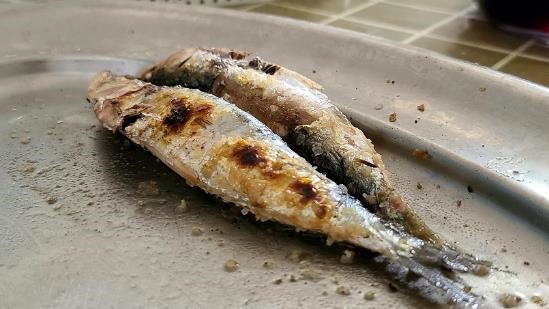
Off to Porto on a Flixbus (low-cost and comfy buses for mid/long-range journeys… who knew?). The price and schedule worked better than either flying or taking the train… especially if one were to be bringing back any bottles of port wine. Porto is an amazing place and Savvy Sailing Girl enjoyed every minute of the trip with Kimberly. In fact, we had originally planned on 3 days and wound up extending 2 more days as we were having so much fun and there was so much to see and do and sip and taste, lol! Stay tuned for the full write-up of Porto, Jerez, and Madeira – the fortified wine centers of the world! Savvy Sailing Girl got to visit all three, wowee!!!
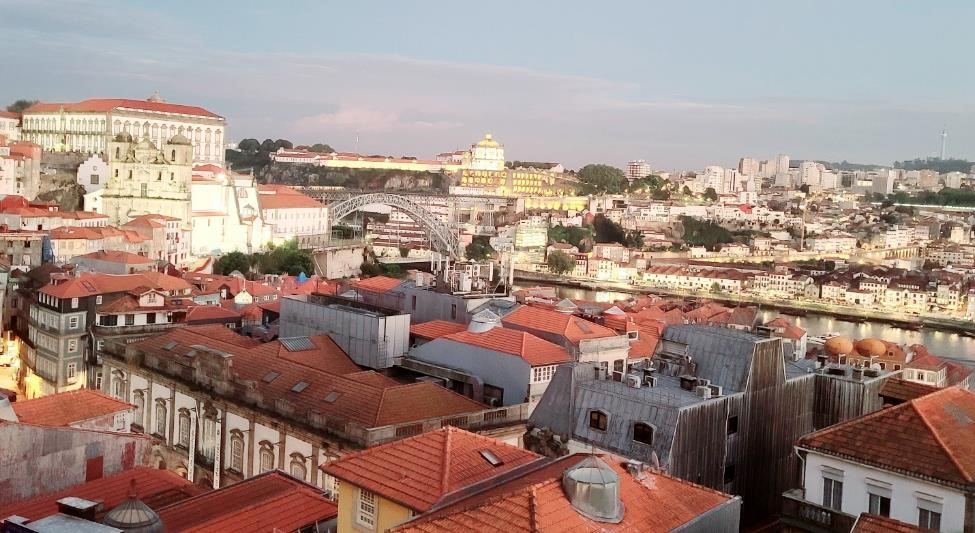

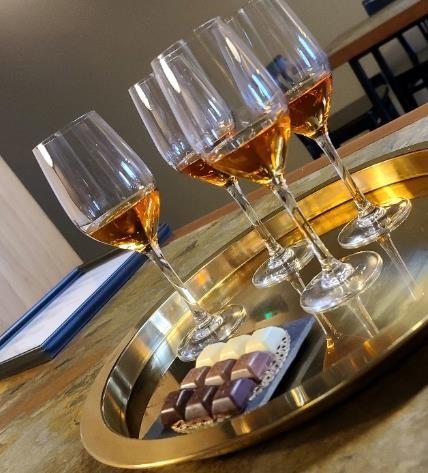

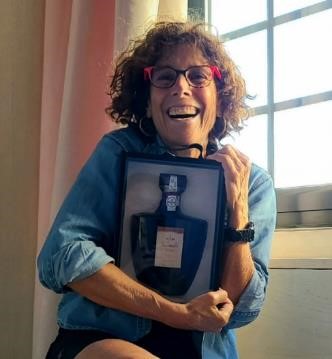
Upon our return, we headed out of Faro and did a day sail west over to Portimão. We provisioned (with 6 people on board and the galley watch system assigned, no minor task) and had 2 days to explore before the good weather window opened up for our offshore passage to Madeira. The trip should take about 5 days. Speaking of the galley watch system… or would it be better not to? Okay, best not to. Stay tuned for the continued adventures and passage to Madeira!
Any port in a storm; port wine that is!
The historic city of Oporto (Porto) lies on the north side of the Duoro River close to the Atlantic and on the south side of the river is Gaia, where all the Port wine bodegas and tasting rooms are located. Either way, north looking south or south looking north, you have a splendid view!
Andalucia is the southern region of Spain and home to the famous fortified Sherry (or Jerez) wines. Sailing along the beautiful coastline from Puerto Sherry near Cadiz all the way to the Guadiana river was a treat!
The Mediterranean is gorgeous, one of the very special places in the world to visit… who wouldn’t love sailing there? Savvy Sailing Girl had had the chance to join a boat in Mallorca to sail the Balearics (the islands of Mallorca, Ibiza and Menorca) then the southern coasts of Spain and Portugal before continuing on to Madeira and the Canary Islands.
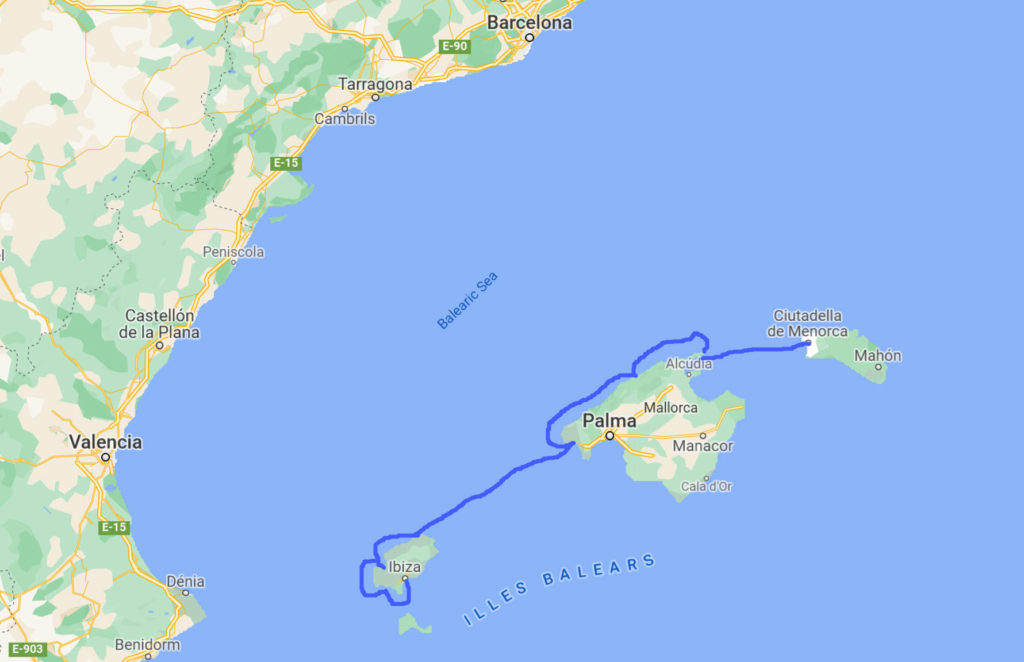
The Balearics – Mallorca, Menorca and Ibiza
Mid July is a lovely time to arrive in Mallorca and the bus from the airport transported SSG over to the northeastern part of the island into the lovely little town of Puerto Pollença. There were 6 of us on board initially, but for only a few days (too many for SSG) then just 3 of us. The weather was beautiful and the vibe, despite continuing covid concerns, was pretty relaxed. We spent a few days anchoring, snorkeling, and just enjoying being on board. We also enjoyed exploring in town, including a wonderful visit to the local Wednesday market for fresh treats.
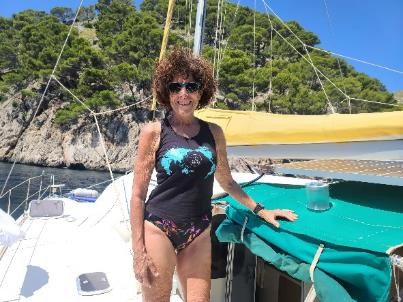

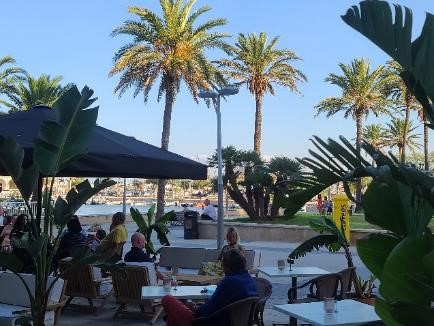
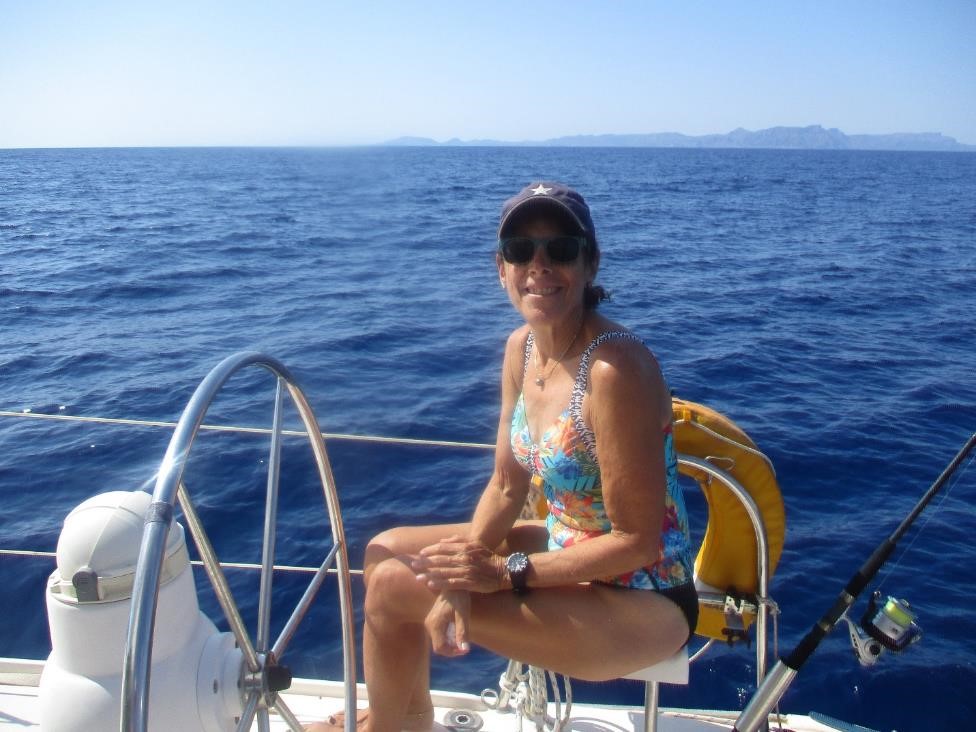

We took a natural gas-powered bus to the northern-most tip of the island, Formentor, and hiked along the coast to the light house. On much of the island one can find vineyards and fruit trees including glorious fig trees. We discovered several fig trees in the traffic circle near the bus station and picked a few as we were coming and going. It was the perfect time for them and they were delicious!
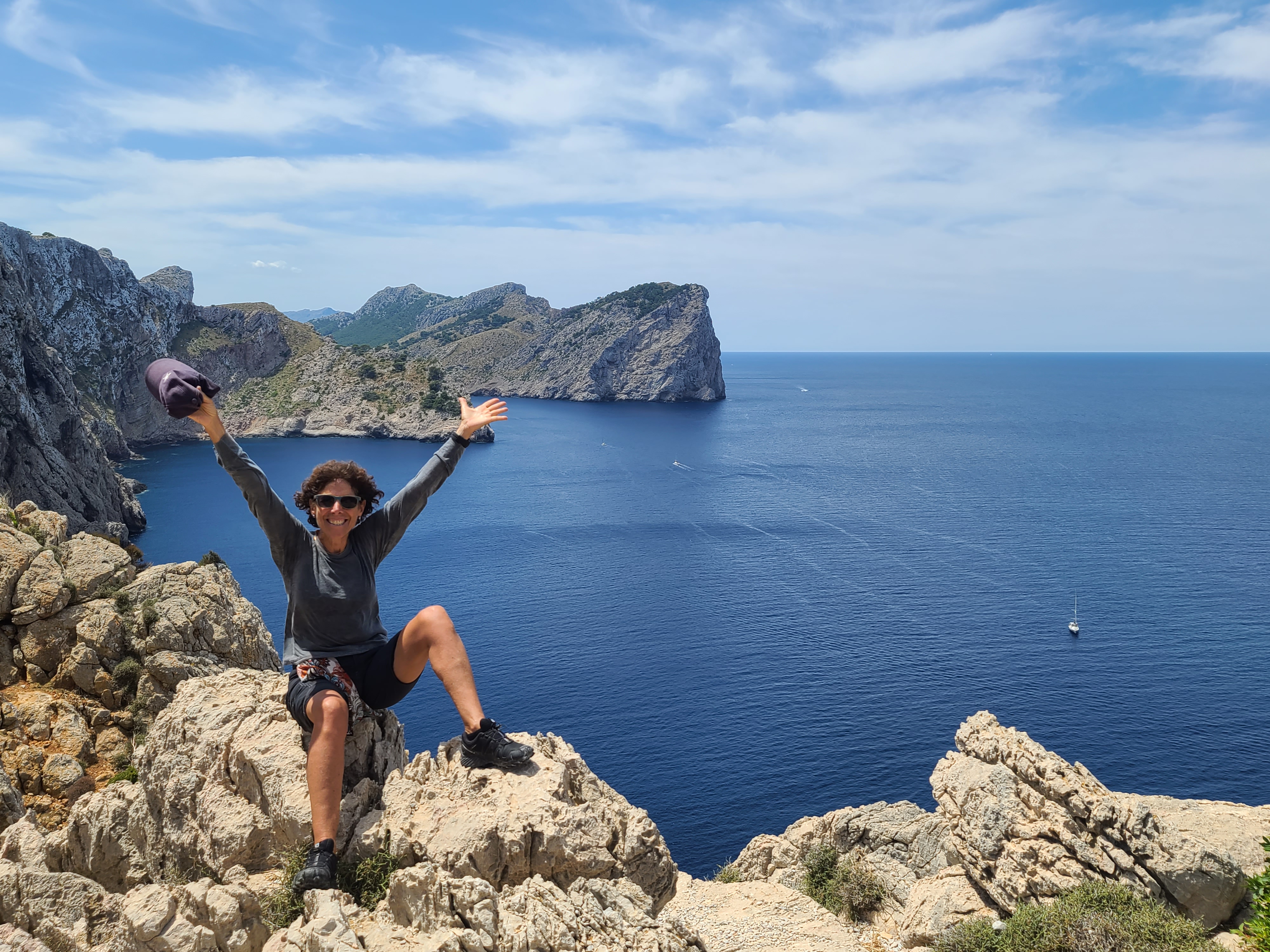

Since it didn’t look like we were going to be sailing into the main town of Palma, I took a bus there (1.5 hours each way from Puerto Pollença) and spent a lovely day meandering around. It reminded me of a small-scale Barcelona, with beautiful squares and lovely elaborate and decorative architecture. The cathedral is spectacular though I didn’t go inside as the line was very long. I did manage to do a bit of shopping though… had eyeglass frames on my mind. The frames are much more stylish in Europe than the US for the most part, and in particular, the Spanish brand Etnia Barcelona has some wonderful designs. I found some I loved, though there wasn’t going to be enough time to actually have the new glasses made up, so I took the frames and would get the lenses later.
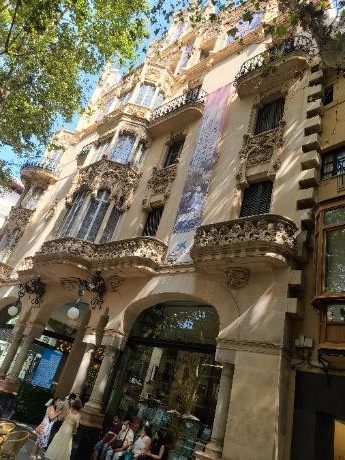

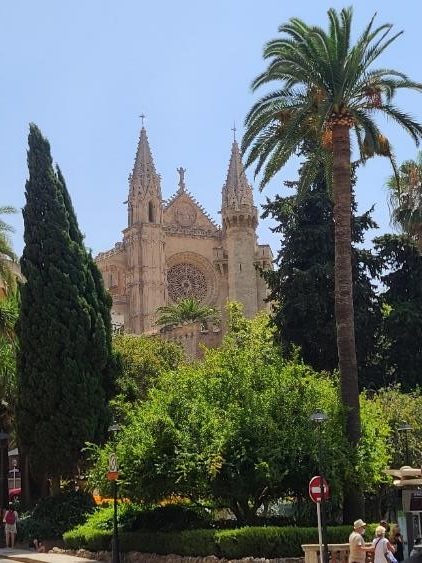
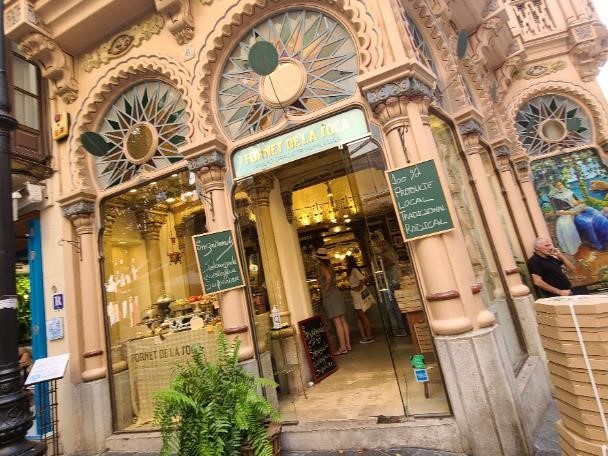

After spending about a week in the area, we sailed over to the next island east, Menorca. We anchored just south of the town of Ciutadella and spend a few nice days anchored, actually “Med moored” (anchor set then stern tied to a rock or tree ashore) because there wasn’t enough swing room for all the boats. One must also be careful not to anchor amidst the Posidonia grass, which is protected in these areas but still losing ground. It was about a mile walk into the town, which was absolutely lovely (and discovered another fig tree to sample from).





We would have enjoyed sailing further around Menorca, but a new crew member was joining in a few days and Sam wanted to get back sooner rather than later, so we sailed back to Pollença to await her arrival.
Apparently, there are some local weather anomalies and in the northeast of Mallorca there are sometimes storms that pass through, which don’t impact any other location on the island. We were awakened one night to just such a condition and where several boats’ anchors had dragged (ours included) and gotten tangled together. In the chilling rain and wind, just in light pj’s (but thankful to have those on at least 😊), we tried to keep the boat safe and fend off from any direct contact with the other boats flailing about. Eventually we got our anchor chain free and tried several times to re-anchor before we got a good hold again. Once situated, still chilled, I borrowed some fleecy pj’s that Sam had bought at a market (blue with elephants… fashion took a backseat to warmth at this point) and crew mate Peter made us all some hot tea… tea never tasted so good! Our new crew member Kimberly joined shortly thereafter and then we were 4. We were to collect one additional crew a few days later and on the west side of Mallorca just north of Palma. We set out with a good forecast and sailed around the light house at the point of Formentor, then along the north coast to Puerto Sóller with a lunch/swimming stop along the way in a beautiful (but crowded) anchorage. Unfortunately, we didn’t have time to go ashore in Puerto Sóller, but it looked very picturesque in the late afternoon sunlight. There is a wooden tram and train going from the port to the town of Sóller and into Palma.
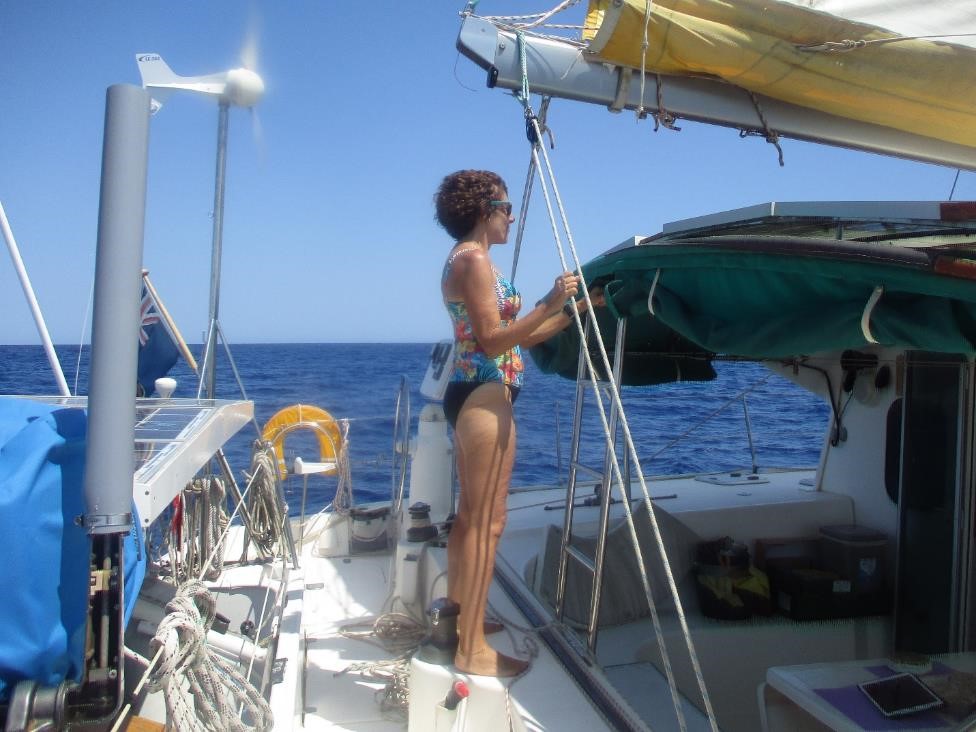
The next day we continued west and anchored near Ponsa, just north of Palma. Jan joined us the following day and we made ready to sail over to the next island west, Ibiza. Ibiza is known for being a party/disco place and also for being home to a large hippy community. “Don’t worry, be hippy!” is often seen as a slogan there and on tourist souvenirs.
We sailed over to Ibiza and anchored short of our initial destination due to fading light. The anchorage at Portinatx was small and we were fairly close to our neighbors, but had a good hold so no problems. The next day we continued on to San Antonio where we hoped to provision up and get a few bits needed for a starboard engine leaking oil. Success on both counts. It was at this point, and after some research into Morocco, that SSG decided she was not going to continue on with Sam and crew. Morocco was in a state of emergency due to covid and no travel was possible. She wouldn’t be able to visit Casablanca or Marrakesh, which were high on her list. Plus, August in Morocco is quite toasty. She decided to spend a little more time in the Balearics and would likely rejoin the boat at a later point after they returned from Morocco. After sailing around to the south of Ibiza into Ibiza town, I said my farewells as did Kimberly, who was leaving to meet friends in Greece. She and I spent a day in Ibiza town, doing what one does there… be a tourist, eat late, then stay up even later and party.
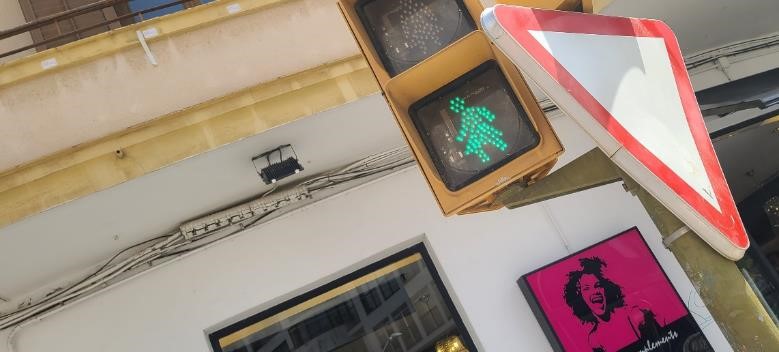
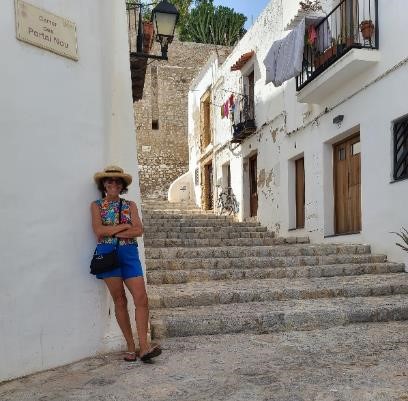



I took a ferry back over to Palma de Mallorca and spent a week in a super Airbnb right by the Olive market in the old part of town. Having decided to return to Palma and stay for a bit, I immediately went back and ordered lenses for my cool new eyeglass frames. 😊 (have a look at their other cool frames at: https://www.etniabarcelona.com/us/en)


It was good to have some time on my own after being with more people on board than I’m used to. I enjoyed walking around town, grazing at the market (jamon iberica is amazing and surpasses even the best Italian prosciutto – okay, though that’s a matter of personal taste which many might dispute, lol!) and just enjoying the cool Med/island vibe. I took the old wooden train to Sóller and the tram to Puerto Sóller, both worth a visit.
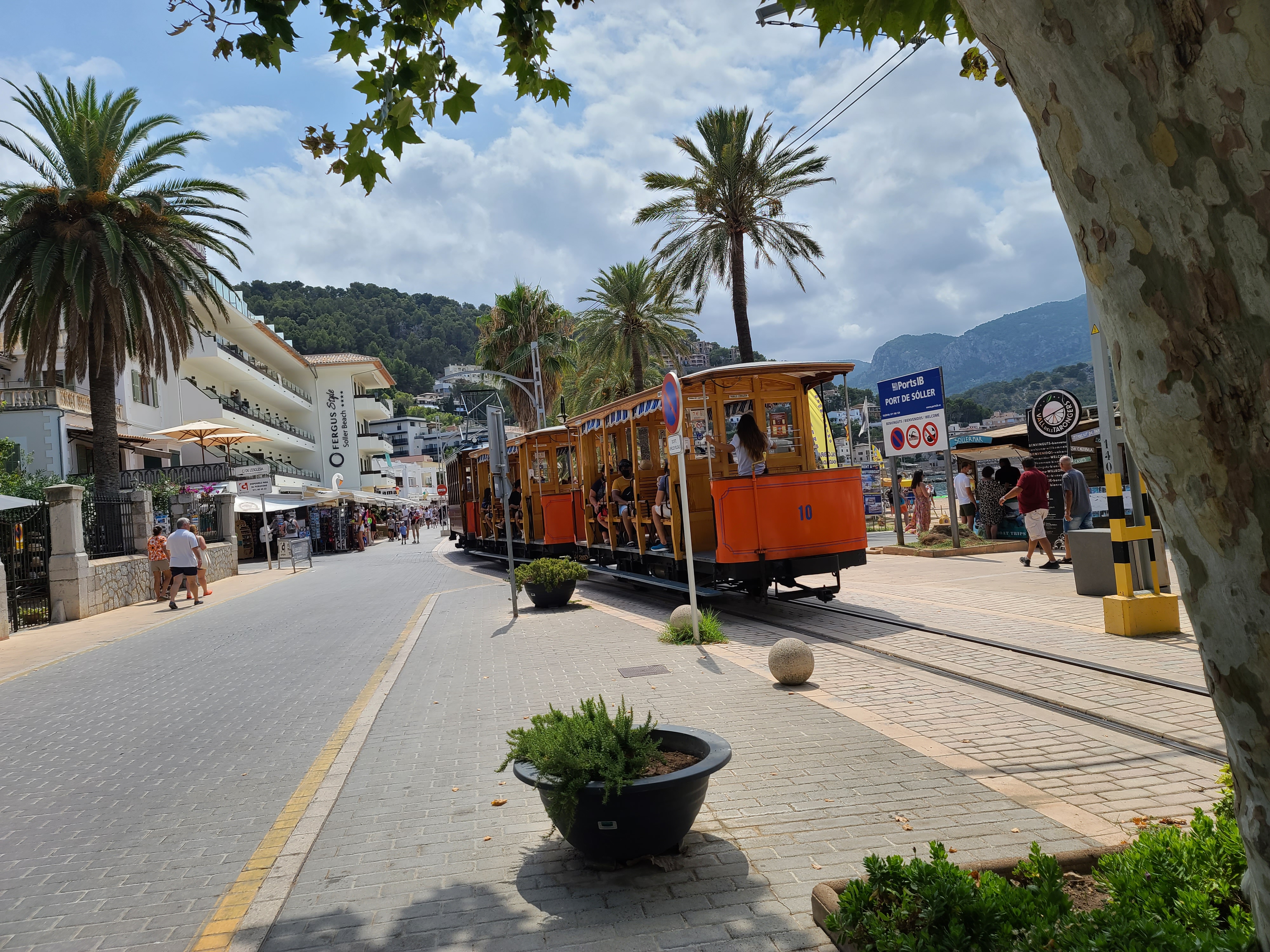
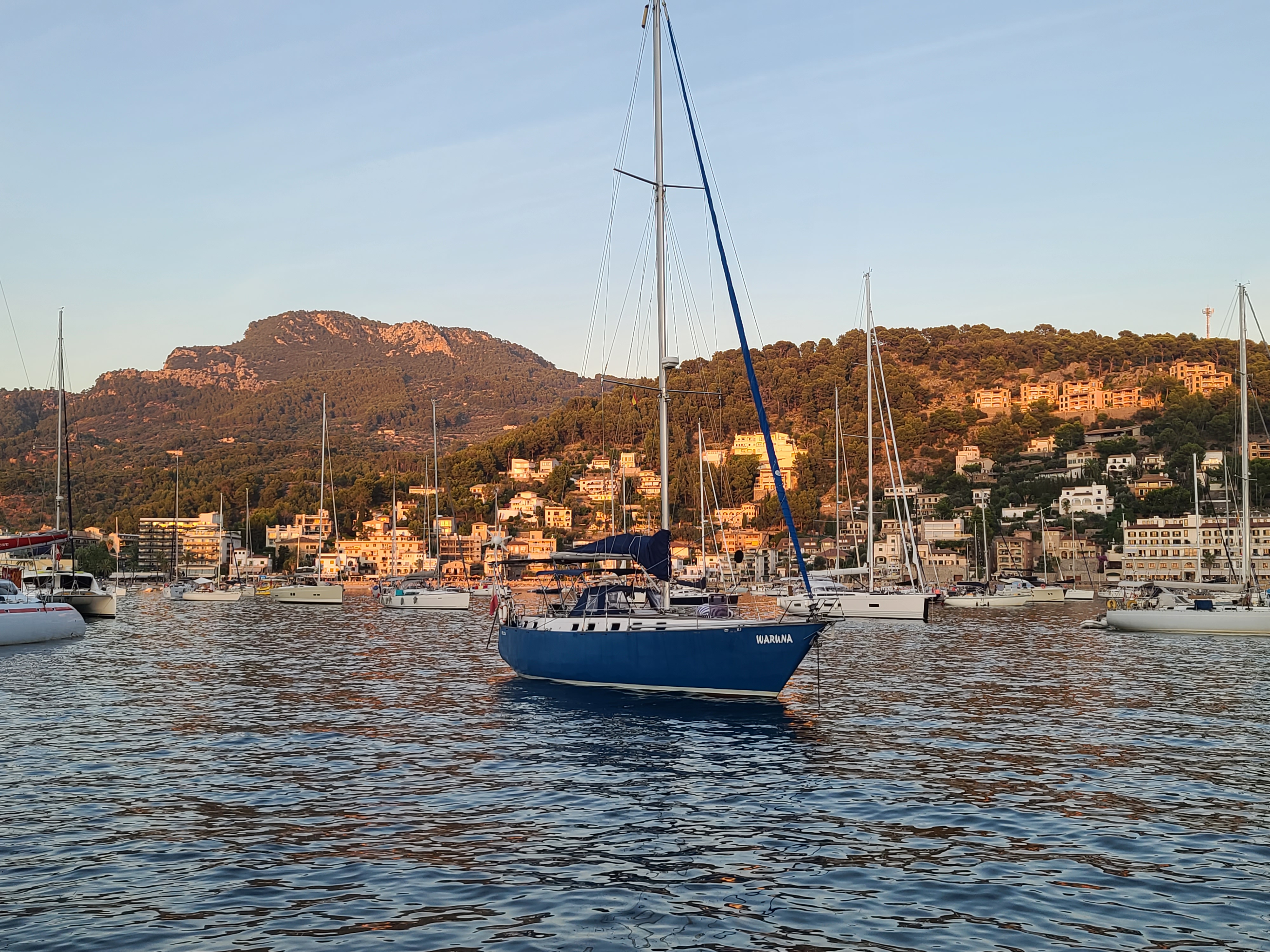
It turns out that Morocco was totally closed… locked down tight. Sam and crew were not able to clear in there. They went on to the Spanish-owned port of Melilla on the African continent instead, before heading through the straits of Gibraltar. There are pods of orca whales in the area of the straits and they seem to want to come play with (or annoy) sailing yachts. They have done some considerable damage to rudders of boats both here and along the Atlantic coastline of Spain and Portugal. Luckily, Sam reported that there were no close encounters with any whales, friendly or otherwise. See you again soon Sam!
Sherry, mon Cherie!
Jerez is the Spanish name for the southern region of Spain in Andalucia and its famous fortified wines. The name Sherry was brought to the area by the Moors of Northern Africa and refers to the same wine and region. There’s a lot more to Sherries than the Bristol Cream and Dry Sack varieties that Americans are most familiar with. Come along and learn more about this lovely area and its wines!
Motor-Sailing Over 1000 Miles
With contrary winds, the trip up the intracoastal waterway of the east coast USA was brief but scenic!

Savvy Sailing Girl came to Antigua to join a boat as crew. But since the owner hadn’t quit smoking as he’d said, and being particularly sensitive to smoke and allergic, she decided that breathing freely somewhere on land was a better option than a smokey environment afloat. She booked an Airbnb studio apartment for a month in the middle of the island and settled in. It’s a bit of countryside for a change and easy to get to both St. John’s (the main town) in the north, English/Falmouth Harbors in the south and Jolly Harbor in the west. The east side of the island is yet to be explored as of this writing.
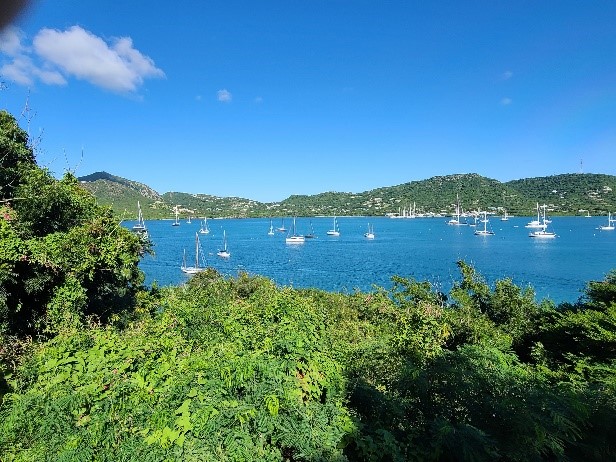
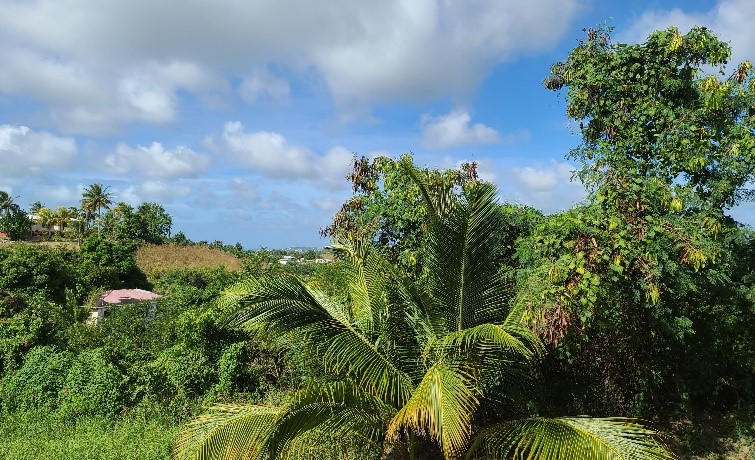
Being a tourist during these unprecedented covid times is a very different experience here in the Caribbean. Normally in-season is winter for most and through May/June for cruising and charter boats wanting to explore the beautiful islands outside of hurricane times. But, as everyone is painfully aware, traveling and exploring in 2020/2021 is a challenge by land or by sea. St. John’s is still active with people going about their normal business, but there isn’t even a hint of tourism currently. Resort areas and upscale restaurants are largely empty as well.
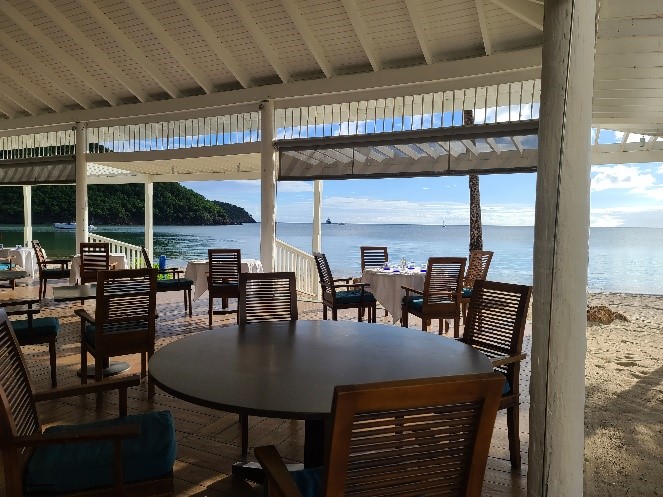
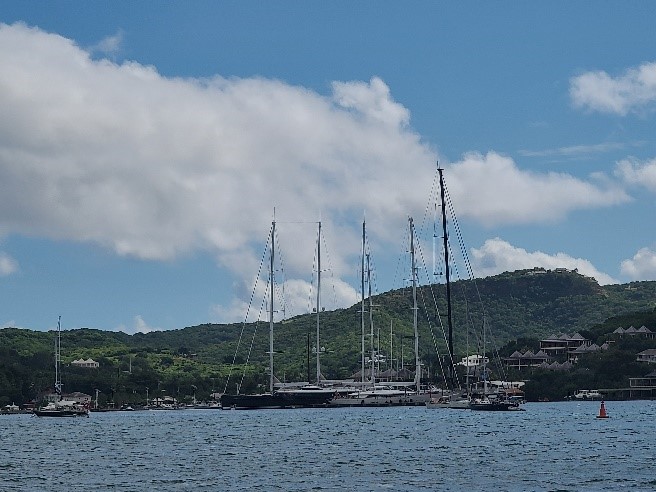
There are some super yachts down at English/Falmouth Harbor, but only a fraction of what is normally present. So far however, as Savvy Sailing Girl writes/posts this, Antigua does seem to be one of the safer places to shelter. Locals are respectful of the mandate to wear masks and there are almost no active cases of the virus. Of course, that could change in the blink of an eye.
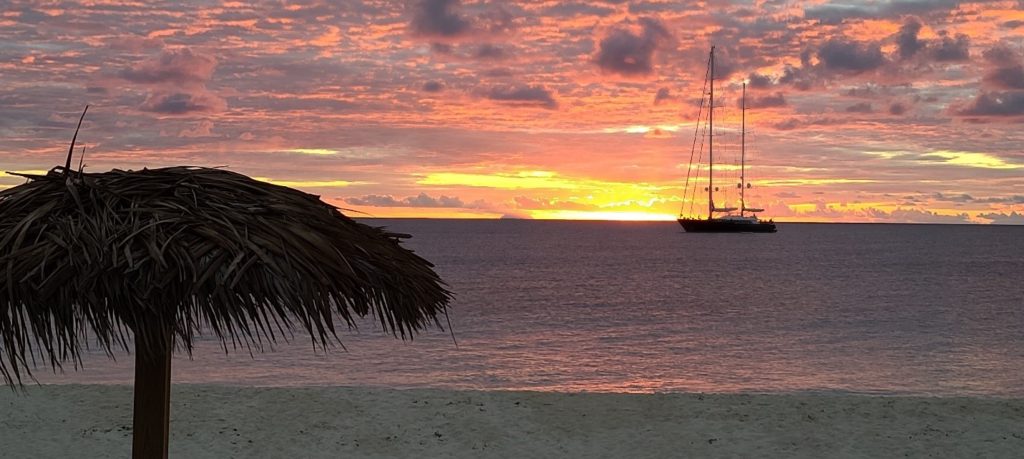
While exploring on land, Savvy Sailing Girl likes finding her way around by local bus. Tourists normally don’t do this much, but it does allow one the opportunity to meet more people as well as see how many locals (without cars) live and travel. Taxis can be somewhat expensive out in the countryside and rentals are as well, requiring a local “international” driver’s license to be obtained here in Antigua. It doesn’t seem worth the cost if you aren’t using the car frequently. SSG’s Airbnb apartment sits directly on a road with a bus, so that seemed like the best “route” to go, so to speak. 😊
And here begins the “Beloved Bus #13” adventure…
As with many islands in the Caribbean and elsewhere, the “bus” is actually a van. The vans are privately owned, so there isn’t any discernible governing system to establish a schedule, though there are official routes (well at least route numbers) defined. This owner/operator approach to transportation along with island flexibility may account for some of the peculiar and inconsistent behaviors observed and documented below. SSG hopes this article will provide some insights on how to navigate the bus-taking process to best advantage as well as provide some entertainment to those who will ultimately decide that taxis and car rentals are, in fact, well worth the price for their convenience.
Identifying the bus – Buses as well as taxis have yellow license plates instead of white and are (cleverly) marked “BUS” or “TX” along with the number, so as they draw near you can tell which is at hand.
If your eyes aren’t all that sharp, you’ll notice soon enough that the taxis are generally in much better shape than the buses. The buses are a ratty-looking lot for the most part, although there are exceptions and significant variations in condition as well as size, ranging from normal van dimensions to larger (but not full-sized) bus proportions. Regardless, you are always happy to see one approaching if you are waiting. They are, thus far, always white or silver/gray, except for the one #13 bus that is bronze. They will also be sporting a circular sticker on the passenger windscreen with the bus number so you can make sure you’re hopping on the right one. There is at least one road with more than one bus route along it.
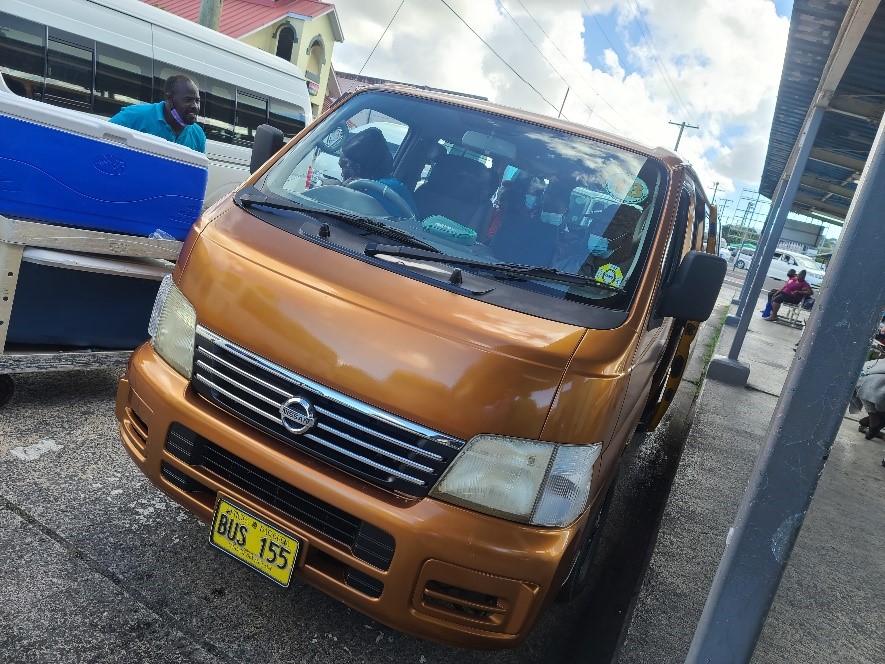
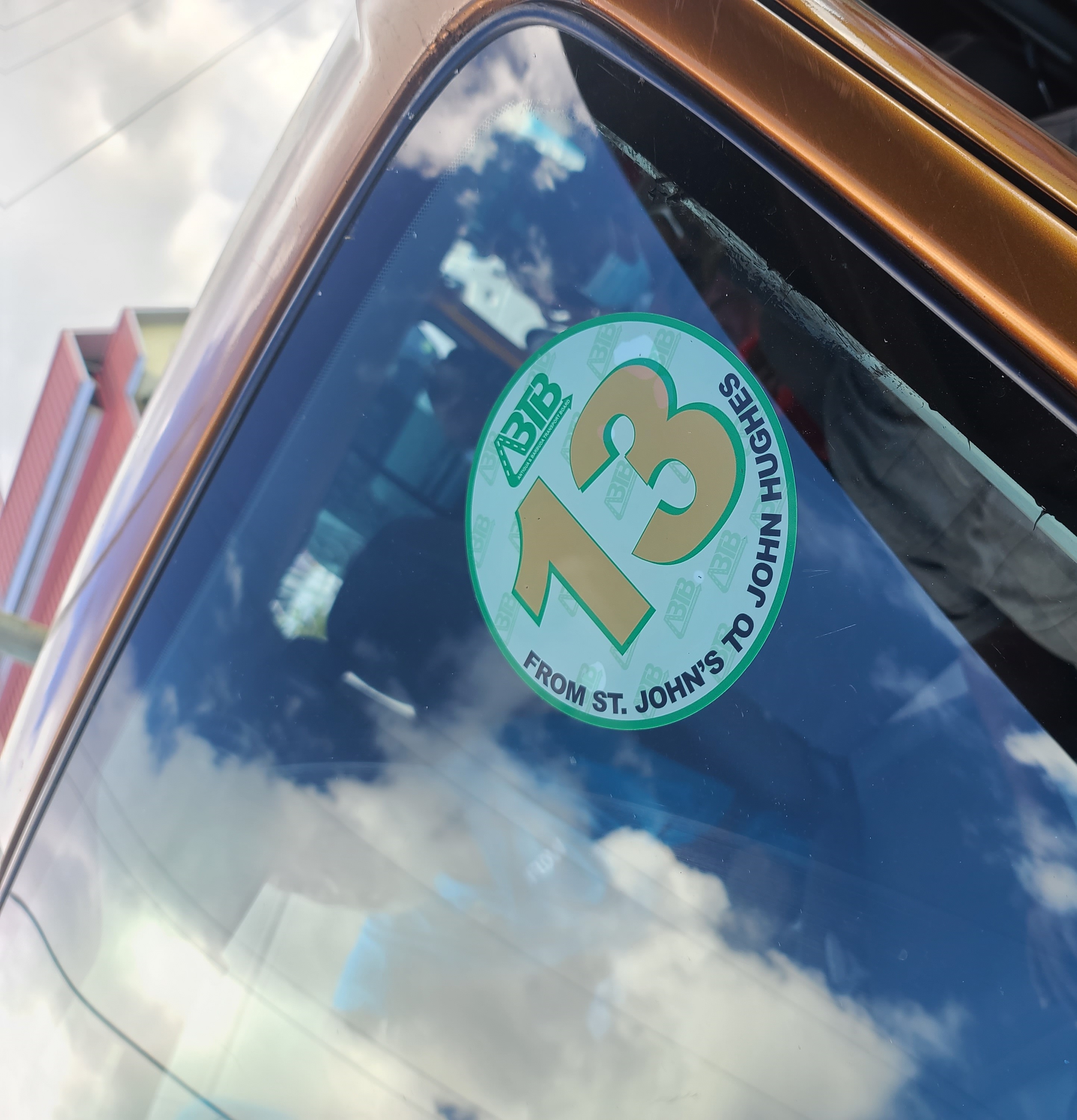
Catching the bus – Unless you are starting at the bus terminal, you’ll likely be standing somewhere along the road and not necessarily at a location marked as an official bus stop. The good news is that buses will stop and pick you up anywhere along the way. If you are standing and looking even somewhat expectant at passing vehicles, the bus will likely slow down and stop to check. Better not to rely on that, and when you see your bus barreling down the road towards you, wave it over and climb in. If you happen to be starting at the beginning of the route, at a bus terminal, you will find that the driver/owner waits until the bus is entirely (or mostly) full before departing. So, you may find yourself sitting for up to 20+ minutes on off hours.

Bus protocol – When entering the bus, it is customary to say hello to everyone already on board. Once seated, most people (during these covid times anyway) do not converse… too hard with masks. You pay for the trip when you exit the bus as the price depends on your distance traveled. It’s still the best bargain in Antigua with the furthest distance so far costing $3 ECD (Eastern Caribbean Dollars) which is a little over $1 USD at the moment.
Bus travel – Yay, you’re on board! And you are literally careening down the road at formula 1 break-neck speeds, or so it feels like. These buses mean business and alternately speed along then slow instantaneously to a snail’s pace at the next moment (careful you don’t get whiplash!) to avoid known bumps, dips and other hazards on ill-kept roads. There is always some light horn honking (more like tapping/beeping) involved as well. This is to greet other buses and friends. Horns are also used to alert vehicles that they are approaching so best watch out, and a variety of other reasons that Savvy Sailing Girl has yet to fully decipher. Also, something that defies complete understanding are the bus routes… in particular, SSG offers the reader her experiences and best practices with the #13 bus…
Bus #13 – Ah, the beloved bus #13. This is the bus that runs along the road where Savvy Sailing Girl is staying. It is not a main road per se (despite being named “Buckley’s Main Road”), but it is a central one. The route begins at the West Bus Terminal in St. Johns and follows All Saints Road until a round-about where it branches off. It continues along this road for a few miles and then things get a bit confusing… it meanders in a variety of different directions. SSG is not sure whether there actually IS an official route or direction, but she has been on about half as many unique routes as times she has been on the bus, which is to say… a lot. If you’re headed south to English/Falmouth Harbor, then you’ll need to connect with the #17 bus. You can do this by taking the #13 bus north to the round-about (which means you are backtracking somewhat) or take it south and walk about 5-7 minutes across to where All Saints road continues on.

Bus #13: Tip 1 – Never pass up a #13 bus! The #13 bus does not run very often, except during peak hours. If you are heading south to English/Falmouth Harbor, take the first available bus in either direction, north or south, to connect with the #17 bus. Don’t let a #13 bus go by as you will be waiting and waiting and then wishing you had grabbed the one that got away.
Bus #13: Tip 2 – Shortest distance does not equal shortest travel time. When you are returning from English/Falmouth Harbor, have walked 5-7 minutes back to where the #13 bus runs and are waiting for the bus north… grab any #13 bus and just get on. Even if it is heading in the wrong direction, you never want to pass up a #13 bus. You may get a short detour or a complete scenic tour of grand proportions (happily, they don’t charge extra for this), but you will eventually reach your destination. If you don’t get on then, the bus may go for a coffee break or take the rest of the day off… no joke.
Bus #13: Tip 3 – Exception to Tip 1. If you are heading to St. Johns rather than connecting to #17, then you really want the #13 bus going north and stay on until the end point. In this case, your best bet is going during peak morning times (say, before 9am). Otherwise, you will wait quite some time or suffer a particularly long (though still) scenic tour and delay.
Bus #13: Tip 4 – Corollary to Tip 2. There’s no telling what the shortest travel time is. If you are returning from English/Falmouth Harbor, then you might think of continuing on the #17 bus up to the north where the #13 bus splits off from All Saints road… this would save you walking and if it’s getting late, there are street lamps to wait under. You might also think there would be more buses heading back from St. John’s. This might work well, except at peak late-afternoon/early-evening times. There will be more buses heading back, but they will be full coming from St. John’s, as no one would take a #13 and get off before the round-about… they’d get on the bigger and more frequent #17 bus. SSG has had full #13 buses pass her by until she realized this and updated her strategy… applying Bus #13: Tip 2.
Bus #13: Tip 5 – Supermarket Delight. This tip is for anyone who actually will be staying and using the beloved bus #13, or the bus #17 from English/Falmouth, or even the bus #20/22 from Jolly Harbor. It may even apply to other buses that SSG hasn’t discovered yet. The supermarket to end all supermarkets in Antigua is the Epicurean. There is one in Jolly Harbor, but the one just outside of St. John’s is about 4 times larger and has so many more delightful things (including someone making take-out sushi!) There is a bus that connects from the West Bus Terminal in town and goes directly to the Epi! It sits on the outer edge out front and has the sign “Woodlands” on it. Rattier than many/most, this bus runs hourly except for the one time it didn’t show up at all at the Epi. Come to find out that the bus goes home between 2:30 and 5pm for a rest. So time your shopping accordingly. You’re welcome!
Bus #13: Tip 6 – If you find yourself waiting for an eternity for a #13 bus and/or need to get somewhere punctually without delay, then surrender and flag down or call a taxi!
So there you have it, Antigua and the #13 bus adventure!
Secure Phone and Internet Solutions
For Savvy Sailors, nomads and others traveling around the world, what are the options and some tips for staying connected, safe and secure while on the go?
Trust is the Foundation of Every Relationship
When you decide you want to crew on a boat and you don’t know the skipper, the boat or the other crew members, you are going to face many unknowns. Whether on land or at sea, trust is the foundation of all relationships. But what is trust really and how can we measure it?
What they are and why you need them!
What is a “cruising card”? A cruising card is sort of like a business card in that it introduces you, provides your essential contact information and communicates to people who you are and what you are offering. But whereas a business card represents you or your company professionally, a cruising card presents you personally (unless you are crewing and cruising for hire as a professional, in which case you do want a business card).
Many cruisers have “boat cards”, which is the boat owner’s version of cruising cards. Boat cards contain not only the owner’s individual contact details, but also important information about the boat. Many times, it’s easier for people to remember the name of a boat than those who were on it. Boat cards can also be handy for shops and marinas as well as for other cruisers who wish to have radio call signs and MMSI numbers.
As crew, in addition to sharing information, having cruising cards is one of the best ways to build up your network and let people know you’re interested in crewing. They’ll be useful on land, as well as on sea, to give to folks you meet personally, and as an alternative to handing them a business card or a hand-written scrap of paper. You can give people a few of your cruising cards to pass along to others who they know may be seeking crew.
Where you can have cruising cards made:
You can have cruising cards made anywhere that makes business cards… at a local copy shop, an online printer like Vistaprint, or you can make your own if you have a printer and determination. Vistaprint and most copy shops will have an assortment of styles and ready-made “templates” to choose from, but if you’re the creative sort, you can create your own design and then upload the file for printing. Savvy Sailing Girl likes to design her own cards and has had great results using Vistaprint. Their process is straightforward and they have good tools for editing and previewing your designs, so you make sure you print (and get) just what you want.

What you should have on your cruising card:
Your name
Your contact information – email, phone, messaging
Your photo – that’s the best way for people to remember you!
What else you might include on your cruising card:
Hailing port – what country are you from / passport – this could be important in terms of visas if you plan to cruise internationally
Languages spoken – if more than your native language and planning to cruise internationally
Credentials – licenses, sailing, diving or other relevant credentials
Links – to website or profiles on crew-finding sites where you might include additional details of your sailing experience and qualifications.
What not to include on your cruising card:
You can write any of this information, as needed, on the back of your card, but better not to have these things printed there…
Information that you don’t want everyone to have – for example, a satellite phone number
Any limited bandwidth email – such as Sailmail or IridiumGo, etc. Give this out only to select individuals who know how to use these services and won’t attach photos or files.
Home address or mailing address
Home phone
General Design Tips:
Use large enough text and clear font – so that people can read it easily
Make sure the photo of yourself is large enough – so that your face is identifiable
Consider having a 2-sided card – if you have a lot of info,and put some of it on the back instead of squishing it all on the front.
Remember, your cruising card represents YOU – don’t scrimp on design elements (special effects, 2-sided versus single sided and finish), card stock (weight and feel) or shape (rounded corners, specialty sizing). Savvy Sailing Girl likes rounded corners, glossy finish on the front side only (so people can write on the back), and 2-sided full color in premium card stock.
Creative Ideas:
Below are some ideas that might inspire you to create your own. Or, if you’d like a hand with the design, reach out and Savvy Sailing Girl can help!
Have someone take a photo of you holding a white tablet. You can edit the photo later and add any text or images you want! This is not only a fun and flexible idea for your cruising cards, but you can use it to write and send custom message and greetings. Savvy Sailing Girl has also used this idea to create a custom gift card, as you can do with some retailers such as Amazon!

The best option is to use a photo of yourself in a sailing/cruising setting. If you don’t have one already, you can go to a local sailing club or school and have someone take a photo for you… you never know, you might make some good contacts there while you’re at it!
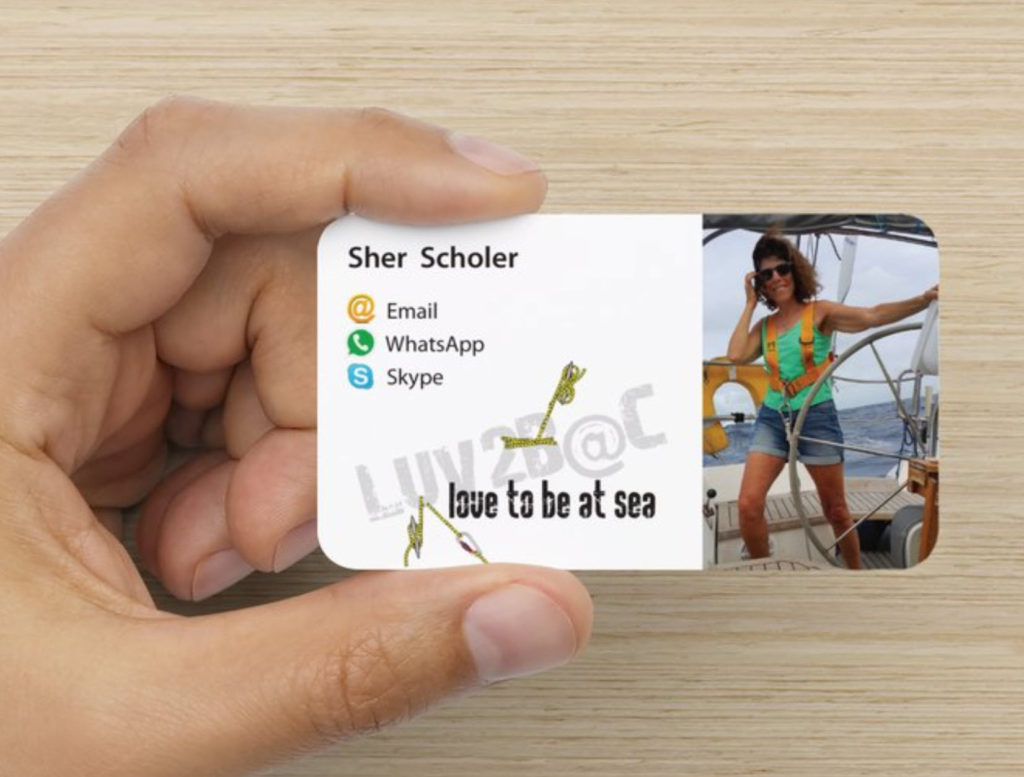
If you don’t have a photo of yourself on or by a boat, and don’t want to go asking people if they’ll take one of you on theirs, then add some graphics with a nautical theme. Also, try getting creative with the angle and positioning of your photo, or use a watermark as a subtle design element…

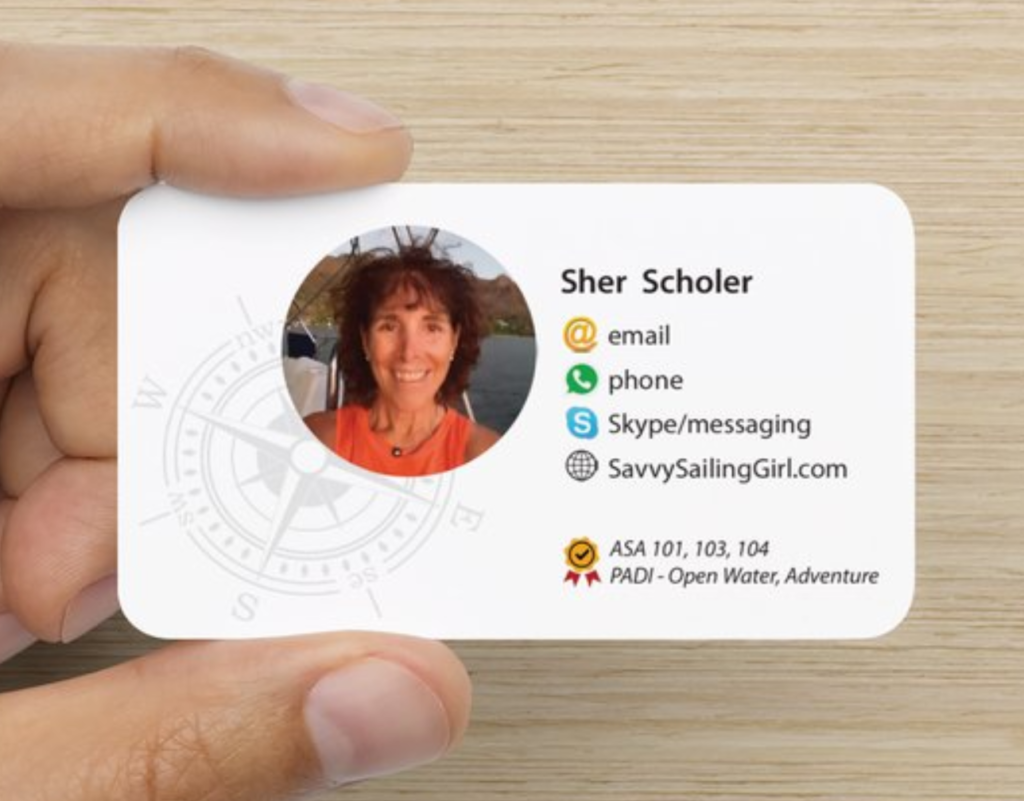
If you don’t want to use your photo at all (not recommended… as always best to use your photo), then use a stock photo of a sailboat (like the one below) or of a location (like tropical islands) you want to highlight to add interest and intent. Do NOT use a stock photo of someone that is not you… but that goes without saying, right? 🙂

Navigating to your objectives in life – start now!
The route to reaching your goals in life is in many ways similar to planning a sailing voyage and navigating the boat on the passage. These 6 steps will help you do that on land or at sea. Get started now…
Compact coffee systems by GSI Outdoors
Brew on board or have Joe on the go, these handy and compact coffee-making systems travel well and stow equally neatly on board with limited space.

Probe Wetsuits are made in Australia. They make a number of different types, but Savvy Sailing Girl loves their iDry “Quick Dry” Semi Dry Dive Suits. They come in 3mm, 5mm, and 7mm fabric thickness. SSG has the 3mm and 5mm suits for different sailing regions as well as the 5mm booties. They are also very flattering on (a feat in and of itself). They run in Aussie sizes, which are typically 2 sizes up from US sizes. If you email them they will help get you sized properly and will also exchange gear if the size isn’t right. And, if you are ordering from the US or elsewhere, the shipping is fast and reasonable. With the current exchange rate (AUD to USD), the price of these well-made, excellent quality suits is about what you’d pay for a mid-range suit at your local dive shop.
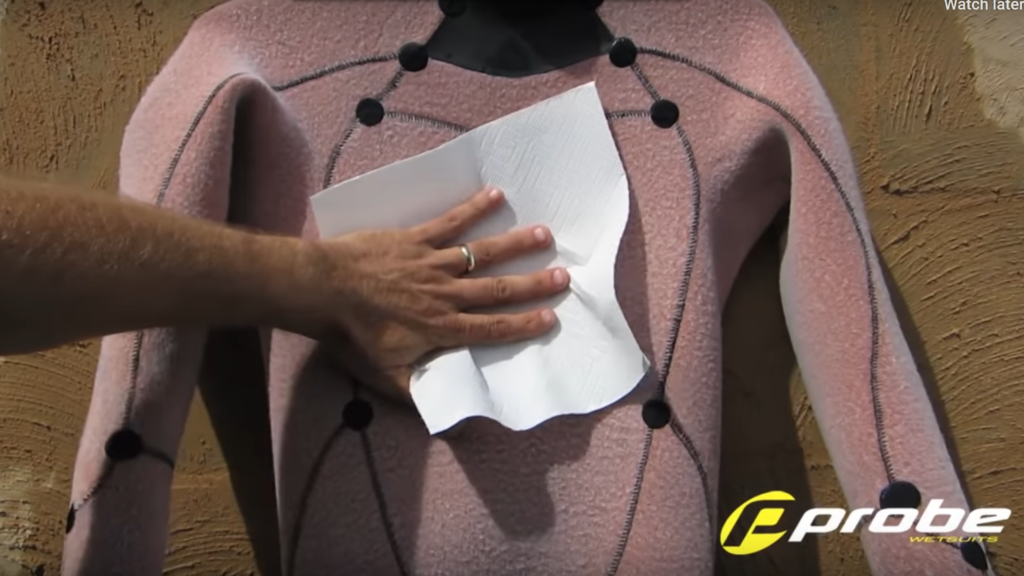
Probe’s iDry Semi Dry Dive Suits, booties, gloves, and hoods, are fleece lined and dry almost immediately on the inside, so you never need to put on cold, wet and clammy dive gear again!
So go ahead and dive right in!
A guide to what to take on your sailing adventure
Getting ready for you sailing adventure and not sure what to take? Here are a few tips and then a list of items you might use as a guideline for packing.
Savvy Mail-forwarding Solutions for Nomad Sailors
One of the pure joys of being a live-aboard or nomad sailor is having the freedom to be anywhere in the world, meander at will (weather permitting), and be from life on land… mostly. There are still “life maintenance” items that need to be attended to even if we do not have a land-based nest.